
The European Court of Human Rights //// The full text of the application in EnglishEUROPEAN COURT OF HUMAN RIGHTS Council of APPLICATIONSubmitted under Article 34 of the European Convention on Human Rights and Rules 45 and 47 of the Rules of Court PARTIES THE APPLICANTS 1. Nom de famille.. TURSUN (ID. NO:38512191640) 2. Prenom (s) MEHMET Sexe: masculin/feminin MALE 3. Nationalite 4. Profession CONTRACTOR 5. Date et lieu de naissance 01.03.1958 / LİCE/DİYARBAKIR/TURKEY 6. Domicile 1870 Sok.Baran Tursun Apt.No.42/Karşıyaka /İZMİR/TÜRKİYE 7. Tel. No: 533 440 45 79 Faks No: 232 382 02 44 9. Nom et prenom du/de la representant(e)* Name of representative* NEZAHAT PAŞA BAYRAKTAR 10.Profession du / de la represant (e) LAWYER 13. THE HIGH CONTRACTING PARTY 14.TURKEY 14-1 THE FACTS Baran Tursun, was 20 year old university student and the facts in relation to this case occurred on the 25th of November 2007 while he was driving to home. On that day The police team no: 82329 was on duty at the Sultan Çiftliği Cross Road. The facts of the case were based on the act of the police officer, Oral Emre Atar, a member of the mentioned police team, (with his gun in a way of standing, his arms parallel to the ground and linear shot) shot and killed Baran Tursun who was driving to home(Annex 99: The reasoned judgment of Karşıyaka 1st Assize Court on 20.05.2009(2007/456E, 2009/226K, p43) 14.2- The applicants are living in Izmir. Baran Tursun was the only son of Mehmet and Berrin Tursun and brother of Berfin and Şelale Tursun.( Annex 123: The register of birth and family records for the applicant) 14.3- On 24.11.2007, Baran Tursun, had been together with his friends Atilla Doğan and Emre Özçelik and they had meal at 19:00 and then went out to Alsancak at 23:30 by the car(license plate: 35AL9207) which was to belong to the company that Baran Tursun was one of the partners. At 3:00am, Baran and his two friends had been driving to home on Sakarya Road that links Bornova to Karşıyaka which are the two districts of Izmir. The road that Baran was driving on, was fully bright because of the high street illumination tools. So the road had a very clear and wide visibility range. The Police Team(No:82330) under the authority of Bornova Police Department was on duty on Sakarya Road, which Baran was driving on. Baran, was passing by the police vehicle without any problem and going on to drive home. The Police team, after the event, declared that they blinked the headlights of the police vehicle 185 meters away from Baran’s car, because of having suspicion for Baran’s car. (Annex 59: The gendarme expert crimine scene investigation report, p01) The blink made by the police that has not any meaning or any place in the traffic regulations and which was made from a very long distance as 185 meters away from the victim’s car and this situation was reflected in police radio records and court minutes as a kind of STOP ORDER.(Annex 15: Police Radio Records) 14.4- On the other hand, Baran’ two friends stated in the first hearing before the judge that they were driving to Karşıyaka without having any problems and in a very ordinary way, when they turned left in the Smryna Circle, they did not see any police vehicles at the road, only two police vehicles driving in a very normal behind Baran’s car without any light or voice caution, there was no pontoons or any other things on the road and nobody warned them to stop in anyway. When Baran Tursun and his two friends were close to Sultan Çiftliği Cross, they saw a police vehicle and two police standing beside the vehicle. Baran’s two friends stated before the judge in the first hearing that while they were driving on their way, Emre heard a gun ghot and turn back of the car and said “They are firing!” after Emre heard the gun shot, and then Emre realized that blood was spread on him and got frightened and checked himself whether he was shot or not, and then said Baran to stop while holding his arm and Baran’s head was falling down to the Emre’s shoulders. The car was out of control after Baran was shot by a firearm behind his head, and the car was passing over the centre strip and driving on the opposite direction of the road and the it was stopped by the effect of hitting something near the road. Emre and Atilla was ordered to lie down and handcuffed and got to the police vehicle and detained by the police. The friends told the police that Baran was shot by gun and they wanted to see Baran to check his conditions but they had already been in the police vehicle and the police did not let them leave the police vehicle.( Annex 34: The statements of Emre Özçelik in the first hearing, p26) 14.5- The police went near to Baran’s car and checked the car. They saw some bidding and contract files in relation to the Ministry of National Defence. The police stated that they were following Baran’s car. The policemen Mehmet Çay and Haldun Baylan arranged and signed a report indicating that there was a traffic accident with property damage. (Annex: 1; The traffic accident minute arranged by the police officers to show that a traffic accident was happened) Baran Tursun had cardiac-arrest two times and he had been subjected to Cardiopulmonary resuscitation (CPR) while he was taken away to hospital by the ambulance called by the police. The police followed the ambulance to Ege University Hospital and informed the hospital and the paramedics that Baran Tursun was a victim of traffic accident; the police did not give any information to doctors or paramedics that Baran Tursun was shot by a firearm. 14.6- The Emergency Service doctor Özgür Çevrim and the police who was on duty at the Police Station of the Hospital M. İhsan Özer arranged and signed a traffic accident(for the accidents involve injured people) report for Baran Tursun.(Annex 2: Hospital Delivery Report, the police officer arranged this report to hide the fact that Baran Tursun was shot)
When Baran Tursun was consulted under the brain tomography, it was realised that there was a fire arm bullet in his head. The doctor who made this consultation informed the police officers about this finding. On the other hand, even at this stage, even though the fire-arm bullet finding, the Public Prosecutor was not informed about the situation and the police was hiding the shooting act of the polices.( Annex 39: The Treatment documents of Ege University, Faculty of Medicine) 14.7- Oral Emre Atar was the police officer who shot Baran Tursun at the Sultan Çiftliği Cross. Oral Emre Atar aimed and shot directly Baran Tursun behind the car, the bullet entered behind Baran’s head and stuck in front of the bone. Because the driver Baran’s injury from his head, the car lost the control and hit the trees centre strip and utility pole 50 meter away from the shot point. 14.8- The event was tried to be shown as a traffic accident by the police and the police tried to hide the evidences of shooting. The back glass of Baran’s car was broken by the police to hide the bullet hole. The broken glass pieces were in the back side of the car, namely in the boot and this finding verified that the glass was broken after the shooting. Also, the witnesses in the car, Emre and Atilla, in their statements told that they saw a hole in the back window of the car when they looked behind the car. The police officers, called 112(the emergency service) and requested an ambulance for a traffic accident. The police officers told the paramedics of the ambulance that there was a traffic accident and the officers hide the reality that Baran Tursun was shot by a firearm. Baran Tursun whose injury had a high and aggravated nature was removed to the hospital by the ambulance. While the ambulance on the road to hospital, Baran had cardiac arrest, after the paramedics’ medical attention, he returned to life again. When Baran arrived the emergency room, he had been moved to the brain tomography and the doctors fixed a firearm bullet in his cranium. After the doctors fixed the firearm bullet in Baran’s cranium, they informed the hospital police and then the procedures were transacted under the term of injury by a firearm. 14.9- The public prosecutor on duty was not informed by the police about the fact and the evidences were altered, covered up and destroyed. Despite the fact time is 03:17am, the firearms and cartridges used by the police officers were preserved at 09:30. The two police officers arranged a minute that the firearms and cartridges were preserved. (Annex 7; Firearm Preservation Minute. The police officer’s gun was preserved 6 hours later from the crime time) The police officers Ali Kahvecioğlu, Yusuf Kuçuk, Bilal Ayhan, A.Turgut Turan and Engin Kınlı cited in the minute which was arranged at 07:10 that the fact that it was a traffic accident. After the police officers covered up and destroyed the evidences and the doctor informed the hospital police at Ege University that there was a bullet in Baran’s cranium, the Crime Scene Investigation Unit was announced. In the report of Crime Scene Investigation Unit, it was ascertained that there were blood and cranial tissues on the upper part of driver’s seat. Because, it is very definite that Baran was shot by a firearm, it is impossible to evaluate this fact as a traffic accident. The police officers who tried to show the fact as a traffic accident are the officers who were attempted to save the suspect police officers from penalty. The police officers did not inform the 112 Emergency Service, paramedics that Baran Tursun was probably or was shot by a firearm. The police officers also told Turkish Electricity Company(TEDAŞ) that the utility pole was fall down on account of a traffic accident. For these reasons, the case was evaluated in the minutes of TEDAŞ and Medical Institutions as a traffic accident.( Annex 99: The reasoned judgment of Karşıyaka 1st Assize Court on 20.05.2009(2007/456E, 2009/226K, the statement of witness Erdal Ceylan, p23) 14.10- The bid documents which were in the baggage of the car were put Baran’s hands by the police officers and the media took the photos of Baran. Thus, the act was attempted to be shown as a traffic accident occurring from a driver’s negligence. As can be seen in the news in Tv and papers, by the virtue of photos of Baran sitting in the driver’s seat holding the bid documents at the time of the event, the police officers tried to draw a picture that was marking a traffic accident originating from a careless driver who read his documents while driving.(Annex 4: Baran’s photo) 14.11- It was appeared that Baran was injured by a firearm bullet, not by a traffic accident after brain tomography at the hospital. According to the radio records of the police and the other documents, Baran was shot at about 03:17am. The public prosecutor was informed by the police at 06:46. (Annex 31: the public prosecutor’s permission document, while the prosecutor should be informed immediately, in the instant case he was informed 3.5 hours later) 14.12- Before and after informing the public prosecutor, the police officers transacted many inquiry processes to cover up or destroy the evidences or to produce new evidences. In the crime scene there were two polices who used firearms and these two police officers collected their shells remaining from the shots lonely and without waiting for the Crime Scene Investigation Units.(Annex 6: Shell Collecting Minute, The police officer who fired had not the authority to collect the shells) It was emerged from the shell collection minute that police officers had the shells of the bullets till 07:15 with themselves. There was no record in the case file indicating at what time that the police officers submitted the shells to the unit which was appointed to make the investigation. 14.13- Anyway, the firearms and the cartridges belonging to these two police officers, were delivered at 09:30 am and thus the police officers had the authority on their firearms which were the evidences of a crime investigation for more than 6 hours. (Annex 7: Firearm Delivery Minute, the firearms were delivered 6 hours later) 14.14- Although the crime was committed at about 03:00am, the alcohol examination in relation to the suspect police officers was made at 13:29pm for more than 10 hours after the incident. It is no doubt that the alcohol examination report for the suspect police officers is very valuable evidence. 10 hour-late alcohol examination report, in the meaning of legal conception, is to prevent the reflection of the reality into the reports if the suspect police officers had been drunk on duty.(Annex 8: Breath Test Report, while the breath test should be done immediately after the event, in the instant case, it was done 10 hours later) 14.15- To take the hand swabs for the police officers who used fire arms or probably used fire arms was too late. The beginning time for hand swabs was 06:00 and the process was finished at 08:40. Because of this delay to take the hand swabs, it was not possible to have the hand swabs of Oral Emre ATAR who was responsible for the fire caused Baran’s death. (Annex 9: The Hand Swab Report. The hand swab report surprisingly showed that the police officer who alleged that he fired, did not fire and the other police officer who alleged that he did not fire, fired) Taking into consideration that the results of shooting were partly existed in the car, it is clear that the car’s position and the evidences in the car have a great effect to enlighten the facts of this case. Despite having the information that the case was based on a shot not on a accident, the car was searched unlawfully by the unauthorized polices. Though the investigation had to be done by the Police Branch of Homicide, all procedures like search in relation to the car, had been done by Bayraklı Police Station. The police officers who were on duty at Bayraklı Police Station and who were also the witnesses of this case, searched the car in a unlawful and inadequate way and seizure some materials in the car. The car was taken from the crime scene by a towing vehicle belong to Özfındık Company, a special entrepreneur. 14.16- The suspect police officers were interrogated by the police officers who were the friends of the suspects. The evidences were not collected by an impartial and independent institution. Although the Public Prosecutor ordered to have all the police officers been ready for interrogation at the courtyard, only five of them, namely team 82329 and 8233 were interrogated at the courtyard by the public prosecutor, the others were examined at the Homicide Branch and Bayraklı Police Station by the police. The Public Prosecutor did not go to the crime scene and hold any investigation at the crime scene. The Police Officers carried thorough the investigation but not the public prosecutor did. .(Annex 79; The Statement of Mehmet Süslü, The Public Prosecutor on duty at the crime day) The Crime Scene Investigation Unit examined the Baran’s car after the car was taken back from the towing vehicle and got back to Bayraklı Police Station at 4:55am. However, the evidences were concealed and even by virtue of arranging new evidences, the facts of the case was tried to hide during the examination of CSI. (Annex 22, the statement of witness Şehymus Er, the reasoned judgment, p22) 14.17- The police placed a bullet case piece on the seat which Emre Özçelik was sitting at the time of the event, thus they tried to use produced evidences on behalf of the accused polices who alleged that the bullet had been ricocheted, At the time of the event, Cem Özçelik was sitting on the right front seat of the car. A bullet case piece had been put on the right front seat when Crime Scene Investatigaiton Unit was in the course of duty(It was showed in the 3rd clause and 2nd photo of the report as an evidence number 5 written by Assistant Professor A. Beyhan Özdemir). (Annex 75, The Report of Assistant Professor A. Beyhan Özdemir in relation the bullet case in question) In the first video pictures recorded by the Crime Scene Investigation Unit when the car was on the towing vehicle before leaving the crime scene, this bullet case piece was not on the car, on the other hand after the towing vehicle got to Bayraklı Police Station back and after the car was put down on the ground and the evidences in the car was labelled with numbers by the Crime Scene Units, a photograph was taken that was showing this bullet case piece was on the seat. And also the video recording was stopped during the time that the evidences were labelled with numbers. This bullet case piece was safeguarded by the police. In the latter stages of the investigation and prosecution, this bullet case piece was used as a defence evidence for trying to prove the bullet ricochet on the basis that the suspect police officer did not fire directly against Baran Tursun; the bullet, after ricochet or after hitting on a harsh surface and changing its direction, went inside the car, therefore the suspect police officer alleged that this bullet case piece was the evidence that case was separated from the bullet before the bullet hit Baran’s head. In the pictures and video records taken by the media after the event in a very short while, there were not any bullet or any kind of bullet case pieces on the right front seat. And also, in the search minutes or other writing materials arranged by the police, did not contain any expression or statement about any bullet or any kind of bullet case piece on the right front seat. The police officers who were at the crime scene and who had information about the incident, was invited to the Police Station for the statement of the facts. All the statements of the police officers were exactly the same with each other. Only the police officers changed the names and other personal information under the page and they all signed the same statements. After the public prosecutor was informed about the incident in relation to Baran Tursun, the judicial inquiry was opened; the police officers who were on duty at the crime scene and who were members of different 7 police teams, arranged incident minutes individually and thus they provided fictional and factitious information for the case file. These minutes provided by the police officers who were the suspects and the witnesses of the case at the same time, were accepted as legal evidences by the court. 14.18- The Public Prosecutor on duty, Mehmet Süslü, was informed about the incident that Baran Tursun had been dead because of shot. At the stage of inquiry, the public prosecutor, Mehmet Süslü, stated before the court as a witness that he had not been informed without delay about that Baran Tursun had been wounded by a firearm.(Annex 79; The Statement of Mehmet Süslü, The Public Prosecutor on duty at the crime day) The evidences were not safeguarded, labelled with numbers and collected in a lawful and an appropriate manner. The polices who had a role in this incident, informed the police station that there was a traffic accident. Shells and the evidences in relation to the incident were collected without any minutes or any other written materials in relation to the collection of evidences, by the police officers who were the parties of this crime and who were the colleagues of the suspect police officers The evidences were collected without mentioning the places from where they were collected and without any kind of documenting. The police officers did not specify where the evidences were and in which position the evidences had been found. Baran Tursun’s car was pulled by a towing vehicle from a special company which had been called by the police. Similarly, the crime scene was sandblasted and thus the evidences were lost. The police officers did not write a minute indicating that they used a firearm. (Annex 22, the statement of witness Şehymus Er, the reasoned judgment, p22) 14.19- Not only the police officers who were at the crime scene at the time of the crime but also the police officers who involved in the investigation later, acted to hide the acts of the suspect police officer and make arrangements to this effect. Some objects, tools, documents or other stuff in the back of the car that Baran had been driving, were in mess after the police search and even some bags in the car were taken out of and taken back into the car by the police. The police officers had put the bid documents underarm of Baran intending to dissimulate the event as a traffic accident and then a photo was taken. (Annex 10: The photo of Baran at the time of the crime) 14.20- The camera records were altered by the police officers fraudulently. The police officers recorded the crime scene with a camera, afterwards the attorney of the applicants requested the video tapes but the director of the police team rejected the request and did not give the tapes. The Police Branch of Homicide took over the inquiry file. The police officers of the Homicide Branch did not try to determine the other cameras in the area, only they took the video records of petrol station(OPET) which was near the crime scene. Two police officers were charged by the Homicide Branch to take video records of the petrol station. These officers watched the video records at the petrol station and they wrote a minute in relation to the preservation of the copy records by the police. On the other hand, there were many cuts on the copy video record. The copy was not taken as a whole and continuously. No measures were taken to protect the original video records of the petrol station. It can be realised that the minutes in relation to the preservation of video records by the two police officers and copy video records were totally unlike. It can be seen in the copy video record that Baran Tursun was not driving on the road that the petrol station was there. On the other hand, in the minute, it was written by two police officers that Baran Tursun’s car was travelling at high speed, the car was passing in front of the petrol station at a very high speed with the police teams following Baran’s car. In the copy video record, there was a car but that car was not Baran’s car and there were no police vehicles following that car. Also it can be understood that the video records had been altered to make the records compatible with the information in the minute and some parts of the video records were cut out from the original copy. The evidences in relation the camera records were submitted to the Public Prosecutor after the records were made as a supporting evidence for the suspect police officer statements and arguments. The suspect police officers and the probable witness police officers were always in the same rooms and the probable witness police officers were not separated from the suspects in any stage of preliminary investigation. There were no measures taken to safeguard the evidences against covering up and to protect the witnesses from any pressure or impact. (Annex 91; the 9th hearing minute, the statement of Alper Bağıran, p3) 14.21- The witness statements were under pressure and oriented. The witnesses who were in Baran’s car, Atilla Doğan and Emre Özçelik were handcuffed and detained at the crime scene at the time of the crime. Attorney Alper Bağıran went to Security Directorship to meet the witnesses Atilla Doğan and Emre Özçelik, the police officers did not let him to see Atilla Doğan and Emre Özçelik on the basis of an order given by the public prosecutor on duty, Mehmet Süslü. The witnesses were oppressed. The witnesses were questioned as a statue of witness. The suspect police officers were questioned as the statue of complainant and suspect. The police officers, Engin Kınlı, Yusuf Arslan, Ahmet Turgut Turan, Bilal Ayhan,Sivat Arslan, İlker Dursun, Cankut Dinçer, Ali Kahvecioğlu, Yusuf Kuçuk, Yaşar Dursun Atalay, Bülent Ertuğay, Salih Tokucu, Tayfun Kazıcı,Haldun Baylan and Mehmet Çay, who had been at the crime scene were questioned by the police officers of Homicide Department of Izmir Security Directorate. During questioning, no measures were taken to prevent interaction or interference of the witness police officers with each other. They were not kept in separate places. The Director of Izmir Security, Bülent Girgin, had the statements of the witness police officers written and signed. (Annex:14, Alper Bağıran/Hearing Minute Number 1) 14.22- The police report was written in a false and misleading manner, by the institution at which the suspect police officers employed. The police report arranged by the Izmir Security Directoriate on 25.11.2007, the crime was identified “DISOBEY STOP WARNING MADE BY THE POLİCE and ACCIDENTAL INJUIRY”. Baran Tursun was described as suspect-complainant in the police report. And also the suspect police officers Oral Emre Atar and Veysel Aydın were described as complainant-suspect in the same report. The police report was written in the manner of defending the suspect police officer Oral Emre Atar.( Annex 30: the police report of Izmir Security Department, p1) In the preliminary investigation, it was requested that all police radio records before, after and at the time of the crime should be put into writing material because the existing police radio records were insufficient to illuminate the incident. This request was reiterated in the petition dated on 19.12.2007 and also was requested to include the video records of the petrol station into the case file. 14.23- First of all, the police have not the authority to use firearms against a person who disobeys a stop warning made by the police; moreover, the police had the opportunity to fix the vehicle license and the address of the owner of the vehicle in a few minutes and to initiate the legal procedure in the instant case. The police did not take any measures to have Baran’s car stopped. On the direction that Baran was driving, approximately 100 meter far away from Baran, at Egemek crossing, Police Team No: 82340 was waiting. This crossing was called by the police as Egemek Crossing according to the records of police radio which were submitted to the case file. In the police radio records, Police Team announced to the other police teams that they had closed the road. (Annex 15: Police Radio Records, the written forms) The police officer, Oral Emre Atar, who shot Baran, in both his oral and written arguments, stated that he followed up the event by virtue of the police radio. The accused police officer Oral Emre Atar who stated that he was listening to and speaking with the police radio, was aware of that Police Team No 82340 had closed the crossing on the Baran’s driving direction. If the accused police officer, Oral Emre Atar, who was on duty at Police Team No: 82329 at the crime time, had not fired his gun directly and in a manner of taking aim at the victim, the Police Team No: 82340 that was 100 meter away from the Police Team No: 82329 would have the Baran’s car stopped. It was understood from both the written document showing the places that the police officers on duty and the radio records of 155(Turkish Police Phone Code) that Police Team No:82340 was waiting at the Egemek Crossing. Oral Emre Atar, the accused police officer, listened to the police radio and knew that there was a police team who was 100 meter far from him. The case of using a firearm by the accused police officer was deprived of validity as to the following cross was closed by the other police team. According to this fact, despite the police has no authority to use firearm under this circumstance, Baran Tursun was shot from his head and killed by a very skilled in shooting police officer for only the reason that Baran Tursun did not stop. 14.24- All reports were written and arranged by the police officers. All expert opinions were arranged and written by the Police Criminal Laboratory. In expert report dated on 28.11.2007 with file no: 2007/14758, it was confirmed that there was bullet traces in hand swabs of police officers, Veysel Aydın and Ali Kahvecioğlu. On the other hand, in the same report it was stated that there were no bullet tarces in hand swabs of Oral Emre Atar and other police officers. Not being found bullet traces in hand swabs of Oral Emre Atar who killed Baran tursun with his gun, undoubtfully proves that the evidences in relation to this case, were destroyed.( Annex 9: The Hand Swab Report) 14.25- The Trial Process in relation to Baran Tursun’s death Oral Emre Atar, the accused police officer, was questioned by Karşıyaka(a district of Izmir) Public Prosecutor on 25.11.2007 with the investigation file number 2007/27601. In his statements, he declared; “… while the car was hitting the pontoons, the firearm spontaneously fired when we threw ourselves through the ground. And the car was passing through; first hit the trees and then the utility poles, the car stopped…” The accused police officer used a firearm which had a 9mm calibre. This kind of gun needs a very strong pressure on the trigger to fire. Technically, it is impossible for this kind of gun to fire spontaneously. In this statement, the police officer defended himself on the basis of ricochet and accidental shot. The accused police officer Oral Emre Atar was sent to the court on duty with the request of arrest by the Karşıyaka Public Prosecutor. His statement was taken by Karşıyaka Criminal Court of First Instance with the inquiry number 2007/506. He stated the similar allegations before the judge. The Attorney of Izmir Security Directorate, alleged that the bullet ricocheted and then shot Baran. Karşıyaka 2nd Criminal Court of First Instance decided to arrest the accused police officer on the basis of wounding in the manner of putting his life into danger with probable intent and by the virtue of a firearm... according to the doctor report which specified that there was a bullet in Baran Tursun’s head and according to the scope of minute written by the police officers at 07:15 am, which stated that the police officer fired consciously after the suspect’s(Baran Tursun) car was driving thorough…” 14.26- The Statements of the accused police officer about the firearm spontaneously not purposely. Both the accused police officer and his attorney stated that the gun was fired spontaneously, indeliberately and accidentally without any intention in oral and written submissions after that the doctors fixed a bullet in Baran Tursun’s head by virtue of brain tomography. The police officer Oral Emre Atar who shot Baran stated in his first statements before the judge that he and the other police officer fired a warning shot upward, the vehicle did not stop and drove towards them despite the warning shot, when the vehicle was passing very close to them fastly, he threw himself to the ground as such his left hand was closer to the ground, at that time the gun was fired and this was the third fire.(Annex 18 : The 2nd Court of First instance, the questioning minute) The accused police officer, Oral Emre Atar, stated that upon that the judge asked the question again; “As I said before, I threw myself to the ground because of the vehicle was coming towards us, the gun was fired out of my control and without my will, the direction of the gun could be to the vehicle when it was fired.” This statement was written in the minute of judge. (Annex 18: The 2nd Court of First Instance, the questioning minute) 14.27- As can be seen in the minutes, the accused police officer tried to prove that he did not fire directly and deliberately to Baran Tursun by stating that the gun was fired out of his control and will and the direction of the gun could be to the vehicle, despite his not factual and unconvincing allegations in the first questioning of which he fired a warning shot. The Attorney of the accused police officer, Mr. Mummmer Yurdakul reiterated the accused’s allegations in the written submissions. Mr. Muammer Yurdakul, in the written submissions which was submitted to the Public Prosecutor, stated: “…because the suspect client fired a warning shot before he fell down to the ground and the gun was semi-automatic, the bullet automatically went into the barrel of the gun. The gun was fired spontaneously whilst the gun which was ready to fire, was directed to the ground.” (Annex 19: The submissions of the Attorney of the accused dated 25.11.2007 with the entry no: 2007/27601) Mr. Muammer Yurdakul, in his other written submission, stated “Taking into account that his gun was semi-automatic and the suspect police officer Oral Emre Atar fired a warning shot with his gun under his patronage before he fall down, the gun was fired again spontaneously that it was directed to the ground and to the tyres of the vehicle and ready to fire. (Annex 52: The submissions of the Attorney of the accused dated 10.01.2008, page3) The mentioned Attorney’s submissions had a complementary nature for each other. The accused police officer, Oral Emre Atar, tried to convince the court during the all proceeding stages that he had not the deliberate or intention or will to kill Baran Tursun, he did not fire directly to Baran Tursun and the gun was fired accidentally and spontaneously and so Baran could be dead by this accidental bullet. On the other hand, the two witnesses who were in the car of Baran stated that they did not hear any police siren and the police did not warn them to stop. They also stated before the judge in the first hearing that the police vehicle drove behind them till the Sultan Çiftliği Cross, and the police officer who got off the police vehicle fired towards Baran’s car directly. (Annex 34: The statement of Emre Özçelik in the first hearing, p 26) 14.28- The medical reports stated expressly that Baran Tursun was dead by a bullet hit which followed a linear, direct, straight way. According to the report of Izmir Forensic Group Presidency dated on 04.12.2007 and with number 2007/4022/1563; “(…draws attention to indentation in the brain parenchyma. Cases in the style of the right cerebral convection …… ….. findings are noteworthy. Again Pnömsefalus observed. All left maxillary ……. multi-level lift-off, except for losses draws. Common findings in patients reporting a history of trauma, brain …., right ….. 7 mm at the thickest place. and reaching all sections throughout the ………subarachnoid haemorrhage followed ……. and localization results described above. Localization described above on the right frontal bone defect and bone structures of the high-density appearance on the bullet. …….. and brain parenchyma and foreign body in the bone thought to belong to high-density formations…) Baran Tursun was died by the reason of subdural and subarachnoid hemorrhagic, demolition of brain tissues and cranial bone broken that resulted from a firearm bullet hitting Baran Tursun’s head. Even though, the entry point of the bullet lost partially its nature due to the medical treatment and healing reactions of the skin, it was ascertained that the shot was fired from a long distance according to the skin findings…” According to the Radiology report arranged by Assistant Professor Doctor Ömer Kitiş, an academic of Aegean(Ege) University Faculty of Medicine, Radiology Department(26.11.2007, Protocol No: 2002079506): “It is noteworthy that there are formations in relation to the foreign bodies with high density on the trace of the firearm bullet and there are fractures in right frontal and in the location of parietal… In the fact, it is noteworthy that high density formations… 7 mm… by the reason of a foreign substances…” This report shows that the bullet and bullet case pieces were broken into the pieces and these pieces were diffused on its linear way to the tissues of the brain after entering into the cranium and hitting the bones. 14.29. The Civil Inspectors of Ministry of Internal Affairs made a query against Oral Emre Atar and Veysel Aydın who used a firearm in the instant case. Oral Emre Atar told the inspectors: “… I fired my gun once for a warning shot upward, meanwhile the suspect car was passing close to me, I knew that I fired my gun again to the ground and then my gun was fired once again when I threw myself to the ground which was near our police vehicle. At that time, I heard that our chief officer of the team fired a warning shot, but I did not see in which direction and how many times he was fire…” The Ministry of Interior decided not to need to impose a discipline punishment for Veysel Aydın and The Ministry decided to impose a removal from office for more than 24 months punishment according to the additional 6 clause of Security Discipline Regulation on 11.12.2007 and with the registry no 35-2/4832. (Annex 42: Ministry of Internal Affairs, the Inspector Discipline Report) 14.30- The Court examined and accepted the indictment of the Public Prosecutor without granting the right of objection for the complainants. Karşıyaka Public Prosecutor held an inquiry about the two police officers who used firearms in this event on 25.11.2007, submitted the indictment in relation to this case to the 1st Assize Court of Karşıyaka on 28.12.2007 with the file no 2007/10211. The Court decided to reject the indictment on 28.12.2007 on the basis that only Oral Emre Atar’s act was taken into consideration in the indictment and it was not stated how accused Veysel Aydın was participated in the acts of other accused and it was not fixed a article of Turkish Penal Code in relation the acts of Veysel Aydın in the indictment. Upon this decision, the Public Prosecutor decided not to open any criminal case for Veysel Aydın on account of homicide on 28.12.2007 with the file no 2007/30167. In the indictment submitted on the same day, It was accepted that Oral Emre Atar killed the victim with the probable intend and deliberate by the Public Prosecutor. In the Public Prosecutor’s indictment, it was stated that “The suspect, Oral Emre Atar, did not have the necessity to use a firearm in the instant case as to the article 16 of Law of Duties and Powers of Police, no 2559(amended with the law no 5681) or he was not in a position of defending himself or another in the meaning of lawful defence. The suspect fired two warning shots upward and then fired a shot behind the victim and killed him… The suspect was aware of that he could harm the victim when he fired the third shot behind the car of the victim, however, he did not intend to the consequences of the event, namely he did not want to kill the victim. Article 21 of Turkish Penal Code defines the probable intend(deliberate) as follows: “a person who commits an act, despite foreseeing the realization of the consequences of the crime elements as defined in the law, is as regarded a as a probable intend(deliberate). The Suspect foresaw that a person could be wounded or be killed when he fired a shot behind the car. So he was of aware of that his act was unlawful and these facts should be regarded as homicide with probable intend (deliberate) on account of that he fired the third shot without taking into consideration of the results.” The public prosecutor submitted the indictment to the court claiming to have the suspect sentenced according to the articles 81/1, 21/2 29/1 53,63 of Turkish Penal Code. (Annex 47: The Indictment of the Public Prosecutor, 2007/539) 14.31- 1st Assize Court of Karşıyaka accepted the indictment of the public prosecutor on 28.12.2007 without written notification to the lawyers of the victim and without giving the right of objection. The Court decided to the continuance of the arrest in relation to the suspect police officer, Oral Emre Atar and hold the hearing on 14.01.2008 to determine the evidences. 14.32- The investigation for the crimes; Forgery in official documents, not reporting the crime, demolition, covering up or altering of the evidences. The applicant Mehmet Tursun made many attempts to provide that the suspect police officer would be sentenced by the court. He filed a complaint to Karşıyaka Chief Public Prosecutor on account of demolition and covered up of the evidences, many process which protected the suspect police officer from a punisment, delay of the processes which lead to prevent an effective investigation in relation the homicide file of Baran Tursun. The lawyers of the applicant filed a petition to Karşıyaka Chief Public Prosecutor requesting to make a query about 36 police officers. The Public Prosecutor pursued an inquiry and this inquiry was not independent and impartial. The public prosecutor took the statements of the police officers. The Public Prosecutor took the statement of the applicant Mehmet Tursun. In the petition the applicant Mehmet Tursun filed, he stated that he asked for the punishment of the police officers who demolished the evidences by virtue of putting a bullet case pieces in the car and took the photo despite there were no bullet case piece in the first photos taken by the pres. The applicant wrote 3000 letters and sent them to the institutions and people that he told the necessary situations in the case. The letter sent by Mehmet Tursun to the Prime Minister Recep Tayyip Erdoğan, was sent to Karşıyaka Chief Public Prosecutor with a letter which requested from the Public Prosecutor to take necessary actions for the case. The letter first fwas put in the investigation file. Then the letter of the Prime Minister sent to the substitute Public Prosecutor Mehmet Emin Kavas for impartial and independent trial. After this stage, the investigation was begun to expand. The Court decided to collect the 8 photos taken by the press and the photos taken by the Crime Scene investigation units and submit all the photos for an expert report to Assistant Professor Mr. Ahmet Beyhan Özdemir on 07.05.2008. In the 3rd article of this expert report in relation to examine the photos, it was stated that a yellow object was discovered on the right front seat which had been labelled with evidence number 5 by the CSI units in the examination of photo number 2. This yellow object did not exist in the other photos.( .Annex 75, The Report of Assistant Professor A. Beyhan Özdemir in relation the bullet case in question) 14.33- The CSI Units, took 50-60 photos of the crime scene while the investigation. In fact, it was understood from the photos taken by the police that the evidences were demolished, destroyed, diminished and covered up. Although, in the photo(no: DSCNO 0019) taken by the police at 05:43am, there was not bullet or bullet case pieces on the right seat, on the other hand, in the photo taken by the police at 06:34am, there were a bullet and bullet case pieces on the right seat.(Annex 21, The Photos taken by the Crime Scene Investigation) 14.34- The expert report, written by Gendarme Sergeant Major Mr. Bülent Uçal, stated that any signs in relation to bullet entry or exit were not fixed, also any ricochet was not fixed on the bonnet of the car or on the windows of the car, there were not any bullet entry or exit point on the upper part or middle part of the seat.(Annex 22, The expert report in relation to whether or not bullet ricochet in the case) 14.35- After the prosecutor questioning, Public Prosecutor decided that there was no need for the criminal prosecution for 28 police officers including Oral Emre Atar who killed Baran Tursun on 28.05.2008.(no:2008/1863 S, 2008/1758K). The lawyers of the complainants objected to the Izmir Assize Court upon this decision. The Court decided to reject the objection. After all domestic proceedings, the applicants applied ECHR in relation the mentioned decision. 14.36- The reason for not taking any action for Oral Emre Atar under this heading was based on the regulation in Turkish Penal Code which regulates that any person who commits the act and who destroys the evidences could not be under prosecution for the evidences. This regulation shall not be compatible with the law, and also it provides an unlawful protection and makes him unreliable from his acts for person who destroys the evidences. 14.37- The Public prosecutor, wrote an indictment against the police officers, Veysel Aydın, Salih Tokucu,Aytekin Altunışık, Tayfun Kazıcı, Bahadır Aksoy, Hasan Taşan, Murat Masat, Kenan Duman, Hacı İsa Onur and Aycan Basdur, on account of forgery in official documents, not reporting the crime despite being judicial police, destroying, demolishing and altering the crime evidences.(Date: 04.06.2008, No: 2008/4646 E 2008/256) 14.38- The Indictment “…For these reasons mentioned below, the mentioned suspects committed the alleged crime: ..Even the suspect, Veysel Aydın, did not know Baran Tursun was wounded, even though he had the ability and chance to know that Baran Tursun was wounded by the fire of Oral Emre Atar, because they fired with their guns to stop Baran Tursun, after that, the driver, Baran Tursun, lost the control of the car and crashed the utility poles and trees on the street refuge 100 meter away from the shot point, he and other suspects collected empty shells in the crime scene despite the officers who were charged to collect and protect the evidences were at the crime scene according to the article 165 of Criminal Procedure Code, (Annex 82: The Indictment) Even though they all knew that firearms were used at the time of the event, they did not inform the public prosecutor and other officers till at 4:00am when the public prosecutor and other officers were informed that the victim was wounded by a firearm, they also destroyed the evidences… It was observed that the suspects who were the officers of Crime Scene ınvestagation Unit, Hasan TAŞAN, H.İsa ONUR, Murat MASAT, Bahadır AKSOY,Kenan DUMAN, Aycan BAŞDUR, examined the car which was on the towing vehicle(353DAD29 license) in front of Bayraklı Police Station at 04:25am, after the case was announced to them, although the suspect police officers did not indicate any bullet case on the right seat of the car by virtue of the photo taken before the labelling of the evidences in the CD(no:2007/3165, photo no: DSCN0019)(as stated in the report of Assistant Professor A. Beyhan Özdemir, Photo No 1), there was a bullet case labelled with no 5 on the right seat of the car in the photos(DSCN0033 and DSCN0034) in the CD that the suspects submitted. From the examination the news records of CNNTürk, Show Tv, Kanal D(the tv channels) at the time Baran was still in the car, it was observed that, according to the report of A. Beyhan Özdemir, there was not a bullet case in the car.(Annex 75, The Report of Assistant Professor A. Beyhan Özdemir in relation the case bullet in question) The expert, Şaban Demikıran, stated in his report that there was no bullet entry or exit or any ricochet point in or on the car licence 35 AL 9207… The evidences submitted during the proceedings should be compatible with the facts, otherwise the criminal justice and the real fact is hindered by virtue of altering, destroying of evidences…” 14.39- The indictment of the Public Prosecutor was submitted to Karşıyaka 1st Assize Court. The Court did not notify the indictment to the lawyers and give the right of objection. The Court accepted the indictment on 13.06.2008 and with number 2008/122 and 2008/44. The first hearing was held on 25.07.2008. The public prosecutor of the court asked from the court to send the case file to the Izmir Assize Court on duty on the basis of lack of subject-matter jurisdiction. The lawyers of the applicant submitted the court the request for intervention to the case and the judgment of ANIK and Others v. Turkey(ECHR, The Application No: 63738/00) The lawyers of the applicants requested from the court consolidate the actions(2008/44 and 2007/456) on the ground that there was a connection with this case file and the case file in relation to homicide of Baran Tursun. The court accepted the request for intervention and decided to send the case to Izmir Assize Court on duty by the reason of lack of jurisdiction because of forming a new district in the Izmir Metropolitan Territory. The lawyers of the applicant with a petition requested from the court to set aside judgement in relation to the consolidation of two actions and consolidate the two actions, and also requested to cancel the decision in relation to lack of jurisdiction. The lawyers asked from the court to send the files Karşıyaka 2nd Assize Court to examine in case the court did not accept the requests. The court did not consider the requests and sent the demur to Karşıyaka 2nd Assize Court. Karşıyaka 2nd Assize court rejected the requests. 14.40- This case which had been decided the lack of jurisdiction by the court, was began to be tried before Izmir 6th Assize Court with the file no 2008/290E. The first hearing was held on 27.10.2008. The requests of lawyers from the court for cross examination of Veysel Aydın, the accused police officer, were rejected by the president judge on account that many other hearings would be held on that day. Upon the lawyer’s persistent requests, the court allowed the lawyers to ask questions to the accused police officer. Meantime, the member judge, (he talked to the president judge and the accused and so the accused police officer hear what he said) said; “The accused will the right to remain silent, so there will be no problem”. The accused police officer, upon the member judge’s interference, answered the first question saying “I do not want to answer this question”. After the lawyer’s second question, the member judge, Mehmet Özcan interfered the questioning by saying “the accused is enjoying the right to remain silent”. Despite the objections of lawyers of the applicants, these objections were not written in the hearing minute. While the 6th accused police officer, Murat Masat was defending himself, the member judge, Mehmet Özcan, suddenly shout, stood up, knocked the bench and said “I would have not expected from you! What are you doing? On one side, the audiences, on the other side the things(staring at the lawyers of the complainant), I will quit from this case!” and then he wore off his judge robe and left the hearing room. The audiences were asked to leave the room. The president judge convinced the judge the member judge to return the hearing room. The member judge, Mehmet Özcan, had his withdrawal reasoning from the case written according to the article 30 of Criminal Procedure Code. The president judge did not allow the audiences to come in the hearing room despite there was no decision for a closed hearing to the public. Only, a few lawyers could enter the hearing room. The lawyers of the applicants asked from the court to enter the attitudes and expressions of the member judge into the minutes; however the president judge did not accept the request. When the lawyers’ submissions about the withdrawal of the member judge were written in the minutes of the hearing, the member judge, Mehmet Özcan, stood up again and said “…I don’t have to listen to them, I withdrew…I will not sign this part of the minute” and left the hearing room again. When the judges were back to the hearing room, the lawyers objected the hearing minutes on the basis that any of the stages of withdrawn or any expressions of the member judge was not written in the hearing minute. The hearing was delayed to 24.12.2008 to appoint a new member judge because of withdrawal. 14.41- The lawyers also requested from the court at that hearing to order the civil polices to go out of the hearing room on the basis that there were many at that hearing and also some of the polices could be before the hearing. The public prosecutor requested from the court to consolidate the case with the homicide of Baran Tursun case tried by Karşıyaka Assize Court. The court decided to join these two cases on 24.12.2008 and sent the case file to Karşıya Assize Court. If the lawyers’ or complainants2 requests to consolidate two actions under the homicide case were taken account by the court, the trial period would have not lengthen 1 more year, the police officers would not have been listened as witnesses at the homicide case. The court did not take into account the opinions or requests lawyers of applicants or the complainants at any stage of the trial and caused a 1 year delay. The court also by not giving a consolidation of cases decision, let the police officers as witnesses in the homicide case, so the police officers who should had been the suspects of homicide case became the witnesses of the case. 14.42- The process of the homicide case of Baran TURSUN The lawyer of the accused police officer requested from the court to put a ban order for broadcast or embargo for the news in relation to the case. This request was rejected by the court on 08.01.2008. The lawyers of the applicant requested from the court to guard and protect the original video records in the petrol station(OPET) by appointing a rogatory judge and gendarme units on the basis that there were cuts and changes on the records by police officers who copied the video record and wished to save the accused police officer. The first hearing of Karşıyaya 1st Assize Court(File NO:2007/456E) was held on 14.01.2008 and firstly the accused police officer was listened by the court. After the court asked the complainant Mehmet Tursun about his claims. The other claimants, Baran Tursun’s mother and his sisters, Berin Tursun, Şelale and Berfin Tursun were not asked about their claims and in later hours of the hearing, Berin and Şelale Tursun were removed from the hearing room. The witnesses were listened in absentia of them. 14.43- The Accused Police Officer, Oral Emre Atar, in his statements, told; “…Veysel had a torch, with this torch he signalled the vehicle to stop, the car was coming towards us without reducing speed, the car was driving towards the pontoons which we put on the road, at that time Veysel fired three times upward, I fired two times upward, the car was driving towards us, the car crashed the pontoons, I threw myself to the ground and I fired once again to the tires of the car when it was passing near us…” The police officer quitted the defence that the gun was spontaneously and accidentally fired and stated that he fired to the car purposely. 14.44- The witness, Atilla Doğan, in his submissions stated that, “We were talking on the road which links Bayraklı to Bornova, Baran told me that a car blinked the headlights behind us on a dark road, the car was very far away from us but Baran said that the car blinked the headlights, when the car behind us speed up and when I turned back to look at the car behind, I realised that it was a police vehicle, and then we saw another police vehicle which was ready to drive to the main road from a crossroad, then we turned to the right to the direction of the crossroad where the other police vehicle was there and we went on our way and we came to Smyrna Cross and turned right again, drove on our way at the same speed, we passed the circle at a higher speed and saw that there were two police vehicles behind us following us, when we passed the circle, I saw that a police vehicle stopped. While we were driving at the same speed, and when we passed a police vehicle, I heard a gun shot, and Emre, looking back to the car, said that they were firing, I supposed that everything was going on normal because the car was driving on the road. Emre said Baran to stop, but Emre hold Baran’s arm, at that moment I saw that Baran’s head fell over Emre’s shoulder. Then I saw that we hit a utility pole, when I was out of the car, I was thinking about Baran, the police officers ordered to lie down by drawing their guns towards us, I lay down and they handcuffed me, when they took met o the police vehicle, I wished to move to Baran because I knew that he was shot. I did not able to see Baran’s situation because the back window was black, them I was taken to the Bayraklı Police Station by the police vehicle…” Upon the question, he said that he did not hear the siren of police vehicles and there was no warning made from the voice tubes of the police vehicle. He said“…At the place we had the traffic accident, I saw a police vehicle lighting its upper lights… I didn’t see any pontoons on the road, I didn’t see who fired and any police officer stood up, I remembered that I heard a firearm sound. Upon the question of the public prosecutor, he answered; “When I was handcuffed and taken to the police vehicle by the police officers, I said loudly to the police officers near to me that Baran was shot, for this reason he lost the control of the car and we had the accident.” (Annex 53: The first hearing minute of Karşıyaka 1st assize Court, Statement of Atilla Doğan, p24) 14.45. Witness Emre Ökçelik, he stated before the court as follows: “…When we were near to Bayraklı, Baran said that a car was blinking its headlights behind us, because the road was very dark. We turned back and looked back and there was a very long distance from us to the car, the car was going on to blink the headlights. Upon this, Baran was driving more speedily and we were going on. The distance from the car behind us was becoming more than before. Then we came to the cross and turned right, we saw the police team on the other side of the road driving. We went on our way speedy. We came to a turn and then turned right. We drove to the main road at the same speed, and we approached the cross. I realized at that moment that a police vehicle on the right was coming. The road was open, on the road there was no barrier and bar on the road. When police vehicle approached us, I realized that the doors of police vehicle were opened. I heard a bullet voice a few seconds later we were driving near the police vehicle…Meanwhile I heard the voice of window crash. When I turned back, I saw a hole on the window. At that time we were still driving and there was a bloodstain on my pants, firstly I wonder about myself and I checked myself. I understood that I had no problem. The car was still going and so I did not wonder about Baran, I said him “Let’s stop” holding his arm. But Baran did not give any reaction to me, and then fell over me. I heard only one shot voice. Then we had passed to the street refuge and went to the other side of the road when the car lost its control, at that time we were under the seats, we opened the door and Atilla and I alighted from the car, the polices handcuffed us and immediately took to the police station. The upper lights of the first car following us were off. On the main road, the upper lights of the police vehicles driving on the road were on, but we did not hear any voice from voice tubes of the police vehicles, we heard one fire voice. We didn’t see who fired. There were no pontoons or any other things on the road. There were not any kinds of these. When we turned right, we didn’t realize the police vehicle first. But later, the police vehicle was driving on its way and we turned right on the opposite direction. When we turned right, the police vehicle and our car drove side by side, on the opposite directions” (Annex 53: The first hearing minute of Karşıyaka 1st assize Court, the statement of Emre Ökçelik, p26) The witness police officers made false statements to save their friends. The public prosecutor interfered the questioning of the witnesses by the lawyers of the complainants, when the lawyers were asking the questions to the witness police officers on the basis of direct, linear and deliberately fire to determine the facts of the case as to the right regulated under the article 201 of Criminal Procedure Code, the Public Prosecutor prevented to arise the facts by virtue of orienting the witness statements and obstructing the lawyers ‘questions. There were many police officers who were not on duty on the benches of the hearing room at the hearing dated on 14.01.2008. One of them was the Police Chief of Bornova Security Department, Mr. Bülent Girgin, who dressed civil suit. Despite they had no official duties, he monitored the whole case and they tried to orient the witness statements. The lawyer of the complainants, Mr. Alper Bağıran heard that Bülent Girgin was saying “we are adjusting the facts, you will learn the statements that we wrote, sign the minutes and state such as this…” when the lawyer went to Homicide Branch of Izmir Security Directorate at 15:13pm at the crime day. (Annex 91: The hearing minutes of Karşıyaka 1st Assize Court on 06.03.2009, 08.05.2009(2007/456E, Alper Bağıran’s statement, p3) 14.46- Even though, to record the hearings by cameras and other technical tools at the court rooms is regulated under the law and these technical equipments were set up in the hearing rooms, the court, persistently, did not record the hearings, despite many requests. In the hearings, the interferences of the public prosecutor and the member judges were not included in the minutes and were not written in the minutes during the hearing. Some interferences, but not exactly the same, were written in the minutes upon the serious objections of lawyers. The interference of president judge to the witnesses and to the accused police officer were not included in the minutes by no manner of means. 14.47- Mehmet Tursun made an objection and left the court room by the reason that that firstly the judge corrected the conflicts in the statements of witness police officers in the minutes as proper to the accused police officer’s statements by virtue of being showed a layout to the witness police officers and being stated that the other police officers made different statements by the judge, secondly the judge interfered the situation that some witness police officers informed the other witness police officers out of the court room despite many notices about this issue and thirdly, being not included Mehmet Tursun’s objections in the minutes by the judge. However, this situation was entered the records as “The Polices made statements according to the direction set up before. The police officers on duty at the court room informed the police officers outside the court room.” The Court, continued to the hearing in the absence of the applicant. The applicant made a press statement outside the court room. By reason of this statement, the applicant was under the criminal investigation on the basis of prompting the judicial duty, coercion, defamation, publicly humiliation of Turkish Republic, judicial bodies, military forces or security department and filed a case against him before Karşıyaka Criminal court of First Instance with the file number 2008/187E. The applicants and Human Rights Defenders were under many criminal charges(ex: Karşıyaka 5th Criminal Court of First Instance, File No: 2008/160) by the attemps of Izmir Security Directors and so the applicants were tried to be under pressure by virtue of punishment threat. The Police Officers, Veysel Aydın, Aytekin Altunışık, Engin Kınalı,Bilal Ayhan, Ahmet Turgut Turan, Salih Tokucu,Tayfun Kazıcı, Ali Kahvecioğlu, Yusuf Küçük, Mehmet Çay, Haldun Baylan, İlker Dursun, Sivat Arslan, Cankut Dinçer, Bülent Ertugay and Yaşar Dursun Atalay were appeared as witnesses before the court.( Annex 53: The first hearing minute of Karşıyaka 1st assize Court) In this stage, although there was a case filed against these police officers on the basis of ; Forgery in official documents, not reporting the crime, demolition, covering up or altering of the evidences, the police officers were appeared as witnesses in the homicide case. The police officers, Veysel AYDIN, Salih TOKUCU, Aytekin ALTUNIŞIK, Tayfun KAZICI, Bahadır AKSOY, Hasan TAŞAN, Murat MASAT, Kenan DUMAN, Hacı İsa ONUR, Aycan BASDUR, who were heard as witnesses in the first hearing before Karşıyaka 1st Assize Court, were exercised as accused in the Indictment of Karşıyaka Chief Public Prosecutor, no 2008/256 Annex 82: The Indictment of Karşıyaka Public Prosecutor on 14.06.2008, 2008/1863, 2008/256, this indictment indicates that the witness police officers later were tried as accused) All civil witnesses stated that they did not hear any stop warning by the police before and after firing time, there were not pontoons or any other tools on the road and the police did not take any measure to stop the car. The Public Prosecutor, requested from the court to release the accused police officer in the first hearing. The intervener lawyers, namely the lawyers of the claimants requested from the court to keep the accused under arrest on the basis that the accused police officer had the probability to prompt the witnesses and make pressure on the witnesses, destroy the evidences and also he had committed the homicide. The Court decided to release the accused perfectly. The lawyers of the claimants objected the release decision on the basis that the accused police officer had the probability to destroy the evidences. Karşıyaka 2nd Assize Court who examined the request, rejected the request. 14.48- The statements of the other polices altered on behalf of Oral Emre Atar. The police officer, Aytekin Altunışık, in his statements, stated that; a- Before the inspector of Ministry of Internal Affairs; “…however, I did not see they fell to the ground. I didn’t see how they fired, because I looked into the running car. I did not see which of my friends fired to the car..” b- Before the public prosecutor; “I saw Veysel and Oral fired to stop the car. But, despite I saw that the person hit the pontoons, and then drove through Veysel and Oral who were away from the pontoons and they lie down on the ground and escaped from the car hitting…” c- Before Karşıyaka 1st Assize Court in file 2007/456E.: “…Oral Emre Atar fired to the tyres of the car…” d- Before Izmir 6th Assize Court in the file 2008/290E.: “…Orla Emre Atar fired once more behind the car after the car passed away…”
14.49- The police officer, Veysel Aydın, in his statements, stated that; a- Before the inspector of Ministry of Internal Affairs; “…I heard that the team officer, Oral Emre Atar, fired a warning shot with me. But I did not see in which position and to which direction he fired and I did not count how many times fired..” b- Before the public prosecutor; “My friend Emre, fired to the air with his gun a few times…when the car was driven speedy, I saw that Emre fired the tyres of the car with his gun…” c- Before Karşıyaka 1st Assize Court in file 2007/456E.: “…I saw that when Oral Emre was on the ground, he fired once again to the whells of the running car” 14.50- Salih Dokucu, in his statements, stated that; a- Before the inspector of Ministry of Internal Affairs; “… I didn’t see how Oral Emre Atar fired, I did not see also who fired the suspect car passing speedly…” b- Before the public prosecutor; “…I saw that they fired to the air to stop jeep…Meanwhile, I saw it was hitting to the poles and trees and stop…” c- Before Karşıyaka 1st Assize Court in file 2007/456E.: “Veysel and Emre fired to the air with their pistols…I saw that Emre Atar, in a position of fell to the ground, fired with the pistol in his right hand to the tires of the car behind the car…” 14.51- Tayfun Kazıcı, in his statements, stated that; a- Before the inspector of Ministry of Internal Affairs; “…I didn’t see who fire and how… I did not see also who fired the suspect car passing speedly…” b- He stated the same before the public prosecutor. c- Before Karşıyaka 1st Assize Court in file 2007/456E, during the investigation at the crime scene by the court; “…The polices fired to the air because the car did stop and went on driving. Oral fired when the car passed in the middle of the polices…” The mentioned statements are the only a part of the fraudulent misrepresentations of the police officers to save the police friend from homicide charge or by reason of the pressure of Director of Security Department on the police officers. If all statements are compared for all stages of investigation and trial such as above, it will be seen that other police officers made false statements. The applicant, in every stage, claimed to Karşıyaka Chief Public Prosecutor about the police officers, AYTEKİN ALTUNIŞIK , VEYSEL AYDIN, SALİH TOKUCU and TAYFUN KAZICI on the basis of subornation. The public prosecutor opened an investigation file with the file no: 2009/2116E. The court only considered the statements of the police officers whose statements had conflicts in the many stages of trial. The court accepted the facts as the police officers stated, and judged on the basis of these statements. These statements(statements before the court trial about false statement) were accepted as evidences of the reasoned judgment. 14.52- The second was held on 11.02.2008 before Karşıyaka 1st Assize Court with the file no 2007/456E. The court decided to exempt the accused from the hearings. After this stage, the accused did not attend the hearings and the applicants could have not asked further questions to the accused. The court decided to make an investigation at the crime scene on 19.02.2011. The Court also decided to send the case file to Istanbul Forensic Institution to determine the facts and arrange a report about the questions mentioned below: a- Whether or not allegedly the bullet with bullet case pieces on the seat was compatible with the bullet found in Baran’s brain, b- Whether or not the bullet was hit the victim by the reason of ricochet from a harm surface, touch or any friction, c- Whether or not the cranium bones were deformed as such in the instant facts, in case the bullet entered the car from the back window without ricochet, d- Whether or not the gun which the bullet fired had the effective traces for identification. Istanbul Forensic Institution Specialized Physics Chamber, in the report dated on 06.03.2008 and with no: 12695/521, stated that; a- The bullet with bullet case pieces could be belong to the parabellum bullet kind, b- The type of the gun which the bullet was fired with a bullet case pieces could not be identified, c- It could not be fixed whether the bullet case pieces belong to the bullet from which kind of gun it was fired. The other questions were not responded. The court asked for a report with the letter dated on 14.05.2008 from Istanbul Forensic Institution. The court also requested from Istanbul Forensic Institution 1st Specialized Board, while arranging the report, to take into account of the documents and the indictment in relation the case file(Karşıyaka 1st Assize Court, 2008/44) which was about acts, the forgery in official documents, not reporting the crime, destroying, covering up or altering of the evidences, allegedly committed by the police officers. 14.53- The investigation was made at the crime scene by the court. In the investigation at the crime scene by the court, the applicant Mehmet Tursun and his lawyers and the attorneys of the accused and the witnesses in Baran Tursun’s car, Atilla Doğan and Emre Ökçelik, the police officers, Oral Emre Atar, Engin Kınlı, Turgut Turan, Bilal Ayhan, Ali Kahvecioğlu, Yusuf Küçük, Salih Tokucu, Tayfun Kazıcı, Veysel Aydın and Aytekin Altunışık participated. The police officer, Tayfun Kazıcı, stated that Oral Emre Atar fired behind the car, after the car passed away. Salih Tokucu stated that Oral Emre Atar, fired behind the car by straighten his hand, when fell down after the car was passing away. Veysel Aydın stated that the accused fired to the direction of the car with his right hand while his left hand was on the ground. Aytekin Altunışık stated that the accused fired once more on his foot by turning his body to the direction of the car. During investigation at the crime scene, the expert Gendarme Sergant Major Bilal Uçar arranged a report. According to the statements of the witnesses, Atilla Doğan and Emre Ökçelik, the distance between the point which the witnesses saw police vehicles and the point that Baran Tursun was shot, namely the distance between Sultan Çiftliği Cross and Smyrna Circle, was 900 meters. They also stated that the police did not give any sound or sign warning to stop them along this distance except the upper lights that were lighting continuously. The witnesses stated that Oral Emre Atar fired at the time that he was getting off from the police vehicle and whilst there were no tools like pontoons which prevent the car to go on. The court determined the facts of the crime scene on the basis of statements of accused police officers without taking into consideration of the statements of these witnesses. At the crime scene investigation made by the court, the distance between Oral Emre Atar that he alleged that he had been at the crime day and Baran’s car in transit was measure 17.5 meters. All the findings of the court during the investigation at the crime scene, were prepared according to the statements of the accused police officers. The court made these findings the base of the judgment. Atilla Doğan and Emre Ökçelik stated that they saw no police teams at the cross, they saw one police team on the direction to Bornova and they were not asked to stop anyway. The lawyer of the applicant, submitted his objections in relation to the investigation at the crime scene on the basis that despite the accused stated that he fired to the car, the judge did not write this in the minute of investigation. 14.54- 3rd hearing was held on 09.05.2008. On 09.08.2008, judge Murat Aydın was appointed as rogatory judge and he went to the petrol station(OPET) to examine the video records with the appointed expert. The director of the station stated that the records were erased due to longtime from the crime day. The lawyers of the applicant requested from the court to arrest the accused on the basis that there was a very strong suspicion on the accused for that he committed the crimes of destroying the evidences and homicide and he was protected by the authorities under the article of 281/1 of Turkish Penal Code despite the crime of destroying evidences was well-established for the accused. 14.55- The fourth hearing was held on 30.06.2008. The case file(file no: 2008/244) about 10 police officers was provided at the fourth hearing and this case file was examined. The lawyers of the applicant requested from the court to consolidate this case with the homicide case of Baran Tursun. The lawyers asked from the court to arrest the accused on the basis that he destroyed the evidences and the witnesses were under fear because the accused police officer was free. The public prosecutor requested to dismiss the request of the lawyers by reason of lack of any facts necessary to consolidate two actions. The court denied the arrest and consolidation requests of lawyers. The lawyers of the applicant raised their objections in relation to denial decision on 03.07.2008. The court denied this objection on 04.07.2008: The fifth hearing was held on 10.09.2008, the sixth on 24.11.2008 and the seventh on 19.01.2008. 14.56- The lawyers of the applicant who had the opinion that the case was monitored and the witnesses were oriented by the police officers, wrote a letter to the Karşıyaka Security Directorate to take information about the polices who were at all the hearings whether they were charged to monitor the hearings by the Directorate or not. The Karşıyaka Security Directorate responded that no police officers were on duty to monitor the case. The lawyers asked the court to identify the police officers at the audience bench. The court identified that 6 police officers in plain-clothes, 3 police officers with official clothes and a police chief were at the hearing room, the names of the police officers in plain-clothes were recorded in the minutes.( Annex 63: The hearing minutes of Karşıyaka 1st Assize Court on 30.06.2008, 10.09.2008, 24.11.2008, 19.01.2009.p1) 14.57- The case file(no:2008/144E) sent to the Izmir 6th Assize Court by reason of lack of jurisdiction, was began to hear with case file 2008/290E and Izmir 6th Assize Court decided to combine the case with the case file 2007/456E. The public prosecutor who had been against the consolidation of actions, did not raise any objection to this decision. The drivers of the towing vehicle, Şeyhmus Er and Ahmet Yıldırım, were appeared before the court as witnesses. They stated that the police announced a traffic accident and police ordered to take the car, when they arrived at the crime scene, they took the car into the tow, while tey were going to the their company, they were called from the Bayraklı Police Station and then they took the car to the garden of Police Station, the polices examined the car in the garden without taking the from the towing vehicle and then took the car to the company. They also stated that after taking the car, the crime scene was sandblasted, he did not see any pontoons or broken pieces of pontoons at the crime scene and there was a ancillary road at the accident area and there was no bar for the traffic flow.
14.58- The 8th hearing was held on 06.03.2009. At this hearing, The court took the statements of 10 police officers because of the consolidation of two actions. Erdal Ceylan and Serdal Çelik who repaired the utility pole, and the medic Erol Erefe were heard as witnesses. The lawyers requested from the court to take a report from Ankara Gendarme Criminal Chamber in relation to the shot positions. The request was rejected by the court.
The applicants asked Professor Ufuk Katkıcı(academician of Adnan Menderes Medical Faculty) to prepare a scientific comment. The report(dated on 03.04.2009) prepared by the Professor was submitted to the court. In this report, Professor Ufuk Katıkçı, summarily stated that the bullet lost a very minimum impetus and had a very less deformation when breaking the glass of the car, the main deformation occurred in the bullet at the time of hitting to the frontal region when entering into the cranium, the case of the could be possibly separated from the bullet not only at the time of hitting the glass the car but also at the time of entering into the cranium, it was not possible to say that the bullet was a tired bullet on account of the bullet had not the possibility to enter the back of the cranium with a 1.5 diameter defect because the bullet would had lost its speed in case of ricochet with the ground so it lost its dynamic and the movement plan, so it was impossible to say that the bullet in the brain was a tired (ricochet or hit somewhere and lost its speed and effect) bullet. Taking into account the victim’s seat, the entry point to the head, the straight and linear way of the bullet and the factors, it is observed… that the fire was linear and direct not ricochet of a bullet to the air or the ground…” Annex 92: The expert report prepared by Professor Ufuk Katkıcı on 03.04.2009)
14.59- The 9th hearing was held on 08.05.2009. The medics Hasan Gökçe and Rıza Melih Arslan and Lawyer Alper Bağıran were heard as witnesses. Lawyer Alper Bağıran stated that he went to consult with the witnesses Atilla and Emre who were under custody at the Security Directorate on the date of crime but he was not allowed to meet them, when he was at the Security Directorate, he heard that a blue eyed blonde man was saying to the police officers “Friends, don’t worry, you give your statements as we said, we teached them what they will say, nothing will be occurred from this event.” He identified Bülent Girgin, Bornova Chief of the Police Teams, at the hearing. Annex 91: The hearing minutes of Karşıyaka 1st Assize Court on 06.03.2009, 08.05.2009(2007/456E, the statement of Aler Bağıran, p3)
Doctor Sabit Solak and the personel of Fire Brigade(AKS 110) were heard at the hearing. Professor Ufuk Katkıcı was also heard at the hearing. He stated before the court that the deformation of the bullet occurred at the time of hitting to the frontal region when entering into the cranium, it was impossible to say that the bullet was lost its speed, it was also impossible to hit the person in the car in case the person fired warning shots to the air. He also stated that it was impossible to say that a bullet could follow a very straight way in the cranium with a defect 1.5 cm diameter on the cranium in case a person fired, in a position of throwing himself on the ground, to the tires of the car and after fire, the bullet ricocheted from the ground then entering into the back glass of the car as a result hit the cranium as mentioned. He stated that the bullet could only enter the cranium as described if the fire made parallel to the ground. Annex 91: The hearing minutes of Karşıyaka 1st Assize Court on 06.03.2009, 08.05.2009(2007/456E, the statements of Ufuk Katkıcı)
The lawyers requested from the court to hear the witnesses Assitant Proffesor Ömer Kitiş, Assistant Professor Türker Acar, Assistant Profesor İsmail Cezmi Yavuz, Doctor Fatih Şen and Doctor Mehmet Ali Çakmak, but the court rejected the request. The public prosecutor submitted the written opinion to the court yet the evidences were not collected.
14.60- In the Public Prosecutor’s opinion, it was stated that “…although the accused police officer, Oral Emre Atar, fired warning shot to stop the car which was under the administration of Baran Tursun by virtue of using his authority arising from the order of the law mentioned under Law of Duties and Powers of Police, no 2559. The car was not stopped and going on to run, the accused police officer fired once again to the tires of the car without taking into account the distance and the accused fired and caused the death of Baran Tursun… the act of the other polices which putting a bullet case on the right seat and taken a photo of this bullet case does not change the reason and the manner of death of Baran Tursun… the other suspect police officer should be acquitted…” So the public prosecutor requested from the court to acquit the other police officers who were under charges of destroying evidences and so forth.( Annex 94: The opinion submitted by Public Prosecutor Sedat Bacaksız on 08.05.2008)
The court decided to hold a hearing 12 days later without giving adequate time for the submissions of the applicants’ lawyers.
14.61- The court judged the brief decision after the submissions of the parties. The lawyers of the applicant, stated the accused police officer should be sentenced under the article 81/1 of the Turkish Penal Code which regulates the deliberately homicide and the other accused police officers should be punished according to the charges mentioned in the indictment.
The Court judged as follows; Veysel Aydın, Salih Tokucu, Aytekin Alyunışık and Tayfun Kazıcı were acquitted of the charges forgery in official documents, not reporting the crime, destroying, covering up or altering of the evidences on the basis that they did not commit the mentioned crimes. Bahadır Aksoy, Hasan Taşan,Murat Masat, Kenan Duman, Hacı İsa Onur and Aycan Basdur were acquitted of the charges forgery in official documents, not reporting the crime, destroying, covering up or altering of the evidences.
These police officers who were acquitted by the court, had been listened by the court as witnesses at the same time.(Annex 99: The reasoned judgment of Karşıyaka 1st Assize Court on 20.05.2009(2007/456E, 2009/226K)
In relation to, the accused police officer, Oral Emre Atar who killed Baran Tursun, The Court stated that “…It was accepted that he committed the killing act without intention and deliberate on the basis that he committed a more serious crime than he intended to; according to the article 85/1 of the Turkish Penal Code with referring to article 16/7-8 of Law on Duties and Powers of the Police (No: 2559) and the articles 24/1, 27/1 of Turkish Penal Code, the court decided to sentence the accused 2 years and 1 month imprisonment. The Court decided not to apply the articles 53/5-6 of Turkish Penal Code on account of the the articles 53/1-2-3 could be applied to the facts of this case.” Article 53 of the Turkish Penal Code regulates the deprivation of rights permanently or temporarily. The court did not deprive the accused police officer ,who caused death of a young men, from his profession or he was not excluded from his gun temporarily yet. This police officer, except the 48 days arrest, took his gun which he shot Baran Tursun in hands and kept being a police officer. The court judgment did not restrict him to keep this profession. The lawyers of the applicant submitted the appeal petition against the court’s brief judgment and they requested from the Supreme Court to hold a hearing for the appeal proceedings. 14.62- The reasoned judgment of the Court; The reasoned judgment of the court was notified to the lawyers of applicant on 16.06.2009. The requests or submissions of the lawyers of the applicant were not included in the reasoned judgment. The witness statements in favor, police radio records and other evidences which could prove that the conditions were not proper to use a firearm, were not included in the reasoned judgment. In the reasoned judgment, some evidences were taken into account and so the court tried to prove that the conditions were proper for the power to use a firearm. The counter-evidences were not taken into consideration. The remaining parts of the statements and other documents which were written in the judgement were mislead. The statements of the police officers who were the tried as accused before Izmir 6th Assize Court(file no: 2008/290E) and the minutes and documents which these police officers arranged as a result of their acts which lead to the crime in the instant case, were based for the reasoned judgment. The impartial civil person witnesses were not taken into account. The statements of witnesses, Emre Ökçelik and Atilla Doğan, who knew the details of the facts, were not taken into account. Although the court accepted that the use of firearm was the last way and although the court was observed that another police team was waiting at Egemek Cross, 100 meter away from the crime scene, the court accepted that the conditions formed to use firearm. The police Team No: 82340, announced that the team kept Egemeak Croos which Baran was driving to. This announcement was being heard by the police officers who fired, the stated they heard the announcement in the different stages of the proceedings. The domestic court did not take into the consideration in the reasoned judgment, the fact that unless the police officers fired Baran, the police team 82340 who kept the road that Baran was driving through, could had caught.( Annex 15: Police Radio Records) 14.63- The Court did not take into consideration the facts that the licence plate of Baran Tursun’s car was readable, the car was registered to Izmir Security Department, the owner of the car, the business and home address was able to be learnt in few minutes, consequently, under these circumstances, no necessity to fire was formed.( Annex 11: The Traffic registration of 35AL9207(Baran’s car) 14.64- The court did not consider the situation of Baran Tursun and his two friends at the crime time. The court did not consider the facts in favour of the applicants, although, according to the scope of whole case file and the statements of all witnesses, it was conclusively established that Baran and his friends, Emre and Atilla, were not under any criminal charge, there was no arrest warrant or detain decision about them, Baran did not commit any kind of act of resistance against the police officers, except the “the escape act which was not established on any evidence and which was not defined as a crime or offense in any law”. 14.65- The court did not consider the statements of Emre and Atilla that “We told the police officers who detained us that a firearm used in the event and Baran was shot by the result of this firearm” 14.66- In the reasoned judgment, it was stated that “It was concluded that Oral Emre Atar fired once, in the position of stand and his hand was parallel to the ground, to the running car behind the car to stop and it was accepted that the bullet did not ricochet from anywhere, the argument that the gun was fired spontaneously or accidentally by the result of that the accused fell down or while he was falling down and the argument that the accused was fired to the ground was not taken into account, by the court, on the facts that the bullet should be fired under the conditions that Oral Emre Atar fired warning shots twice before firing to the car which passed near them, after the car was passed between Veysel and Oral and when the car 17.5 meters away driven(according to the statements of the accused police officers during investigation at the crime scene by the court), and then the fired bullet from that distance could break the back window of the car and enter the victim’s right back side of the brain with deformation and stop in front of the head of the victim. It was observed and recognized to his submissions that the accused Oral Emre Atar fired because of his foresight that the running car was not stopped by any way and he had no intention to kill. The act of the accused was not considered as a deliberate killing or killing with proable intention on the basis that the accused used the power of using firearm that was regulated under the article 16/7-8 of Law on Duties and Powers of Police(no:2559) under the conditions of “flagrante delicto”(catching in the act) condition formed because the act of endangering the traffic safety was committed by the victim by the referral of article 179(endanger the traffic safety)… The accused, Oral Emre Atar, fulfilled the requirements of the law under the scope of article 24/1 of Turkish Penal Code; for this reason, the act of him, firing behind a running car to stop, is compatible with the law, but during the act of the accused which started lawfully, the accused police officer fired in position of stand and his hands were parallel to the ground, without taking into account that the speed of the car, the running car was moving and the event was happening at night, he did not foresee that if he fired as described, he shot the people in the car not the wheels of the car, he did not fire carefully on these basis…it is concluded that the accused Oral Emre Atar commited the crime with actionable negligence...” Annex 99: The reasoned judgment of Karşıyaka 1st Assize Court on 20.05.2009(2007/456E, 2009/226K, p3) The court judged unanimously. The court judgment was the same with the opinion of the public prosecutor. Although, the article 179 of Turkish Penal Code in regulation to that the accused committed the crime by fulfilling the requirements of law without deliberation and intention was not argued in any stages of the case, the court and the public prosecutor remembered this issue suddenly and the court judged according to this article. 14.67- The reasoned judgment was appealed on 03.07.2009. The Chief Public Prosecutor Of the Supreme Court rejected the request to hold a hearing during the appeal proceedings with the notification on 28.01.2010 with no 2009/259022. The lawyers of the applicant raised their objections for the denial of the judgment.( Annex 100: The appeal petition of applicants’ lawyers on 03.07.2009) The appeal proceedings were held on 15.03.2011 with judgement no: 2011/1547K, all requests of lawyers of the applicant were rejected and decided to approve the domestic court judgement by 1st Criminal Chamber of Supreme Court. The judgment was not notified to the lawyers or the applicants. The applicant learnt the judgment on 28.09.2011.( Annex 103: The approval judgement of Supreme Court 1st Criminal Chamber on 15.03.2011(2009/9863E, 2001/1547K) III- STATEMENT OF ALLEGED VIOLATION(S) OF THE CONVENTION AND/ OR PROTOCOLS AND OF RELEVANT ARGUMENTS 15.1- All submissions in relation to the instant case are violated the rights of applicants under the articles 1, 2, 3, 6, 14 and 17 of the Convention. These articles were violated many times in the instant case. 15.2- The Obligation to Respect Human Rights under article 1 of the Convention and The Right to Life under article 2 were violated. The article 2 of the Convention read as follows: “Right to life 1. Everyone’s right to life shall be protected by law. No one shall be deprived of his life intentionally save in the execution of a sentence of a court following his conviction of a crime for which this penalty is provided by law. 2. Deprivation of life shall not be regarded as inflicted in contravention of this Article when it results from the use of force which is no more than absolutely necessary: (a) in defence of any person from unlawful violence; (b) in order to effect a lawful arrest or to prevent the escape of a person (c) in action lawfully taken for the purpose of quelling a riot or insurrection. The Police Officer shot Baran Tursun with a firearm. He shot by aiming to Baran Tursun in a position of straight, linear shot. The article 2 of the Convention was violated. The homicide of Baran Tursun could not be considered under the exceptions stated in the second paragraph of article 2 of the Convention. The United Nations’ Documents United Nations, Basic Principles on the Use of Force and Firearms by Law Enforcement Officials, were adopted on 07.09.1990. Article 9 of Basic Principles on the Use of Force and Firearms by Law Enforcement Officials(United Nations) read as follows; “Law enforcement officials shall not use firearms against persons except in self-defence or defence of others against the imminent threat of death or serious injury, to prevent the perpetration of a particularly serious crime involving grave threat to life, to arrest a person presenting such a danger and resisting their authority, or to prevent his or her escape, and only when less extreme means are insufficient to achieve these objectives. In any event, intentional lethal use of firearms may only be made when strictly unavoidable in order to protect life.” Article 9 of United Nations Principles on the Effective Prevention and Investigation of Extra-legal, Arbitrary and Summary Executions(Recommended by Economic and Social Council resolution 1989/65 of 24 May 1989) read as follows: “There shall be thorough, prompt and impartial investigation of all suspected cases of extra-legal, arbitrary and summary executions, including cases where complaints by relatives or other reliable reports suggest unnatural death in the above circumstances. Governments shall maintain investigative offices and procedures to undertake such inquiries. The purpose of the investigation shall be to determine the cause, manner and time of death, the person responsible, and any pattern or practice which may have brought about that death. It shall include an adequate autopsy, collection and analysis of all physical and documentary evidence and statements from witnesses. The investigation shall distinguish between natural death, accidental death, suicide and homicide.” 15.3- The protection of the right to life should be most important point for the police officers who are armed and who are appointed by the State to protect the safety of citizens. To protect the right to life, necessarily, the best measures should be taken and thought. It is very necessary to teach not to use of firearms if there is no absolute necessity, to give the necessary training to form this, to make very detailed controls, to disarm the police officers who commit crimes by their arms, to make the police officers conscious of that they will be prosecuted and punished in case of violation of the mentioned principles. The judicial system, unfourtnately, do not take the necessary prosecution and so the acts which form the violation of the right to life are not punished and this leads to encourage these kinds of acts. The State has not provided the necessary training about not using the firearms if there is not situation which is strictly unavoidable in order to protect life. The State violates the right to life as such. The articles 1, 2 and 13 are violated. 15.4- The European Court of Human Rights stated in the judgment of McCann and Others, as follows; “The Court's approach to the interpretation of Article 2 (art. 2) must be guided by the fact that the object and purpose of the Convention as an instrument for the protection of individual human beings requires that its provisions be interpreted and applied so as to make its safeguards practical and effective (see, inter alia, the Soering v. the United Kingdom judgment of 7 July 1989, Series A no. 161, p. 34, para. 87, and the Loizidou v. Turkey (Preliminary Objections) judgment of 23 March 1995, Series A no. 310, p. 27, para. 72). It must also be borne in mind that, as a provision (art. 2) which not only safeguards the right to life but sets out the circumstances when the deprivation of life may be justified, Article 2 (art. 2) ranks as one of the most fundamental provisions in the Convention - indeed one which, in peacetime, admits of no derogation under Article 15 (art. 15). Together with Article 3 (art. 15+3) of the Convention, it also enshrines one of the basic values of the democratic societies making up the Council of Europe (see the above-mentioned Soering judgment, p. 34, para. 88). As such, its provisions must be strictly construed. The Court considers that the exceptions delineated in paragraph 2 (art. 2-2) indicate that this provision (art. 2-2) extends to, but is not concerned exclusively with, intentional killing. As the Commission has pointed out, the text of Article 2 (art. 2), read as a whole, demonstrates that paragraph 2 (art. 2-2) does not primarily define instances where it is permitted intentionally to kill an individual, but describes the situations where it is permitted to "use force" which may result, as an unintended outcome, in the deprivation of life. The use of force, however, must be no more than "absolutely necessary" for the achievement of one of the purposes set out in sub-paragraphs (a), (b) or (c) (art. 2-2-a, art. 2-2-b, art. 2-2-c) (see application no. 10044/82, Stewart v. the United Kingdom, 10 July 1984, Decisions and Reports 39, pp. 169-71). In this respect the use of the term "absolutely necessary" in Article 2 para. 2 (art. 2-2) indicates that a stricter and more compelling test of necessity must be employed from that normally applicable when determining whether State action is "necessary in a democratic society" under paragraph 2 of Articles 8 to 11 (art. 8-2, art. 9-2, art. 10-2, art. 11-2) of the Convention. In particular, the force used must be strictly proportionate to the achievement of the aims set out in sub-paragraphs 2 (a), (b) and (c) of Article 2 (art. 2-2-a-b-c). In keeping with the importance of this provision (art. 2) in a democratic society, the Court must, in making its assessment, subject deprivations of life to the most careful scrutiny, particularly where deliberate lethal force is used, taking into consideration not only the actions of the agents of the State who actually administer the force but also all the surrounding circumstances including such matters as the planning and control of the actions under examination.” In the light of this judgment, in the case of homicide of Baran tursun by a police officer, the articles 2 and 13 were violated by virtue of not having an effective investigation taking into consideration of both the act of the accused police officer in the instant case and the attitudes of police department to the citizens and also the control and planning of the acts in similar situations. 15.5- The act of the police officer, Oral Emre Atar,(in relation to the homicide of Baran Tursun by the police officer with a firearm) violated the articles 1, 2 and 3 of the Convention. While Baran Tursun was driving to home, the police officer fired promptly after the car passed the police vehicle without any stop warning, without setting up any bars on the road to stop the car and without taking any measures to stop the car. At the time Baran Tursun drove passing thorough the Sultan çiftliği Cross, although the police officers did not set up any bars on the road and they were not the alongside of the road, the police officers fired him behind the car after the car passed the police vehicle. Not stopping the car was the only act of Baran Tursun. The police officer fired without any power under these conditions. There was no act that Baran Tursun endangered the traffic. Not only Baran Tursun hit nowhere but also he had no suspicious behaviour to be stopped. Izmir is peace city with a very few cases. The cases which were marked to justify the act of police officer could not be linked with this case, also these cases were not in the agenda of Izmir. The alleged cases could not be the reason of using a firearm against Baran Tursun who had no arms and was defenceless. On the other hand, it was realized from the radio records and the duty records of the police officers that a police vehicle which was at Egemek Cross100 meter away from the place that Baran was shot, set up bars on the road to stop Baran’s car. The car which had 35AL9207 license plate, was registered in the name of Tursan Company. In the police radio records, the license plate was announced by the police officers. In case of not stopping the car, it was very easy to find the driver from the digital records in a few seconds. So, in the instant case, the power for “stoppage” and “using firearm” in the meaning of the conditions mentioned in the articles 4/A and 16 of Law on Police Duties and Powers, was not occurred. the police officer and other witness police officers in the stages of proceedings alleged that he did not fire directly to the car, he fired a warning shot to the air but, the bullet ricocheted. Taking into consideration of the piece of bullet sample taking from the victim, the bullet case which was put in he car afterwards, the measurements and determination of the places during the investigation at the crime scene by the domestic court, the reports arranged by Assistant Professor Nadir Arıcan(academician at Istanbul Faculty of Medicine, Forensic), Professor Ufuk Katkıçı (Adnan Menderes University, Faculty of Medicine) and the radiology report arranged by Assistant Professor Ömer Kitiş(Ege University, Faculty of Medicine) and the statements of witnesses Emre Ökçelik and Atila Doğan, it is clear that the accused police officer did not fire the wheels of the car, he fired directly to the victim by aiming his head, because it was impossible for the bullet to ricochet from the ground and separate from its case, to enter the bone in the back of the cranium after breaking the back window and cause a broken bone such as a dome in the frontal of the cranium. It is surely ascertained that the fire was aiming to the victim on the basis of the report arranged by the experts (Criminal Investigation Unit) of Izmir Gendarme Command on 13.03.2008 stating that there was no ricochet sign. The domestic court concluded that Oral Emre Atar fired once, in the position of stand and his hand was parallel to the ground, to the running car behind the car to stop and it was accepted that the bullet did not ricochet from anywhere, the argument that the gun was fired spontaneously or accidentally by the result of that the accused fell down or while he was falling down. The domestic court also accepted that the accused police officer fired in apposition of standing and his hand was parallel to the ground and the domestic court did not take into consideration the accused police officer’s continuously changing statements like “accidental shot”, “deformation on the bullet resulting from the ricochet of the bullet to the ground”. The articles 1, 2 and 3 was violated because of a firearm being used by the accused police officer and the cause of the death of Baran Tursun after 5 days in the reanimation room. 15.6- In the domestic law, the existence of the regulations in relation to the using of firearms in force violates the articles 1 and 2 of the Convention. In the domestic law, article 16 of Law on Police Duties and Powers states that The police may use firearms in the event of: a. In the scope of self defence, c. In cases of resistance by persons whose arrest is necessary or by groups whose dispersal is necessary or of their threatening to attack or carrying out an attack, the police may use violence to subdue these actions. The Police should, under the scope of (c) clause of seventh paragraph, before using a firearm, warn the person to stop as the person is able to hear. In case the person goes on to escape, the police could fire a warning shot. Despite the warning shot, if the person is still running away and if the person cannot be arrested in no way, the police shall fire to arrest the person or fire properly to arrest the person. This regulation is not compatible with the rights of the Convention and the regulation, itself, has a nature that violates the core of right to life. The domestic law does not necessitate the term “In any event, intentional lethal use of firearms may only be made when strictly unavoidable in order to protect life”. The power to use firearms is widely recognized by the domestic law. The police has the power to use firearms in the circumstances of detention or in delicto or arrest warrant in with the self defence and the acts for protection of life in the domestic law. The mentioned law was amended in 2007 and the police has a wider range in power of using firearm. In the amendment, there was no differentiation according to the offences. Namely, the police could use firearm in case of detention or arrest or arrest warrant for even the very simple offences. For example, the police could use firearm in case of noise made by someone, because the police could arrest him for a fine punishment. The very wide using firearm power of police leads to commit the crimes in relation to the violation of right to life as a usual act. The regulation under Law on Duties and Powers of Police forms the violation of the Convention on a lawful base. By the virtue of case law of courts, the range of using firearm power is tried to be clarified. According to the some case law of the Supreme Court, not to obey the stop warning does not give the right to use firearm. Article 2 was violated on the basis that the legal regulation permits wider power in using firearm than the Convention. 15.7- The police officer shot Baran Tursun with his firearm whereas the conditions regulated under the scope of law did not exist. The act of the police officer violated articles 1, 2/2 and 3. The condition in the Law on Duties and Powers of Police which permits using firearm in case of a resistance which could not be stopped by using force or physical force, did not exist in this case. In the instant case, neither the victim nor the other people, in the car resisted against the police and the police did not use any kind of force against them. The police did not warn the victim to stop. If the warning was made, not obeying the warning would no be regarded as a resistance or defiance. In many case law of Supreme Court, not obeying the stop warning of the traffic police does not constitute the elements of negative resistance against the officer on duty. In the instant case, the firearm was used although the conditions in relation to arrest warrant, in delicto and to provide arrest properly, did not exist. In the domestic law, the power of using firearm aims to provide the arrest under the conditions of arrest, bringing by force, in delicto ot arrest warrant. For this reason, in the instant case, the police had no power of using firearm. The rule in the article which regulates using firearm for only to provide arrest in a proper and proportionate way, does not aim anything else. Because, the main duty of the State and the security forces who represent the State, is to protect the life safety of people. Reasonably, using firearm as threading the life safety of people or as violating the right to life, could no be regarded as a lawful firearm using. According to the police radio records, in 20 seconds, closing the there lane road by parking two police vehicles as permitting only one car entry, placing the pontoons 100-200 meters away from the police vehicles and driving back and waiting for the car can not be accomplished in 20 seconds. And also the car passed the bar and 100-150 meters away from the bar, had an accident by hitting trees and utility pole. In the investigation at the crime scene done by the domestic court, upon the order of the court to show the positions of the police vehicles, it was clarified that the allegation that the road was not closed and police vehicles were not parked as permitting only one car entry, was not a reliable statement. According to the police radio records, it was announced that the police team 82340 had been waiting and had already closed the road at Egemak Cross. Both the police chief and the officer who directed the police radio announces did not order to use firearms. By reason of these explanations, the conditions of using firearm against Baran Tursun by the police officer did not exist. Although it was possible to prevent any kind of damage by less force in the instant case, the firearm was used. There was a serious disproportion between the damage occurred when the lethal force would be used or the reasonable foreseeable damage which would be the result of the undesirable act and the damage which would be wanted to prevent. In this case, using firearm was not reasonable. In the judgment of Nachova and Other v. Bulgaria(26.07.2005; 43577/98 ve 43579/98), ECHR fixed the criteria as for the requirements for using firearms compatible with the former case law. The Court stated as follows: “The applicants alleged that their relatives had been killed in violation of Article 2 of the Convention, as a result of deficient law and practice which permitted the use of lethal force without absolute necessity. They also complained that the authorities had failed to conduct an effective investigation into the deaths, in violation of Article 2 and Article 13. The applicants further alleged that prejudice and hostile attitudes towards people of Roma origin had played a decisive role in the events leading up to the shootings and the failure to carry out a meaningful investigation. They relied on Article 14 in conjunction with Article 2. The Court noted as a matter of grave concern that the regulations on the use of firearms by the military police effectively permitted lethal force to be used when arresting a member of the armed forces for even the most minor offence. Not only were the regulations not published, they contained no clear safeguards to prevent the arbitrary deprivation of life. Such a legal framework was fundamentally deficient and fell well short of the level of protection “by law” of the right to life that was required by the Convention in present-day democratic societies in Europe. The Court thus found that there had been a general failure by Bulgaria to comply with its obligation under Article 2 of the Convention to secure the right to life by putting in place an appropriate legal and administrative framework on the use of force and firearms by military police. As regards the planning and control of the operation, the Grand Chamber endorsed the Chamber’s finding that the authorities had failed to comply with their obligation to minimise the risk of loss of life since the arresting officers had been instructed to use all available means to arrest Mr Angelov and Mr Petkov, despite the fact that they were unarmed and posed no danger to life or limb. On this subject, the Grand Chamber said that the absence of a clear legal and regulatory framework had permitted a team of heavily armed officers to be dispatched to arrest the two men without any prior discussion of the threat, if any, they posed or clear warnings on the need to minimise any risk to life. In short, the manner in which the operation had been planned and controlled betrayed a deplorable disregard for the pre-eminence of the right to life. As to the actions of the arresting officers, the Court considered that in the circumstances of the case any resort to potentially lethal force was prohibited by Article 2 of the Convention, regardless of any risk that Mr Angelov and Mr Petkov might escape. In addition, the conduct of Major G., the officer who shot the victims, called for serious criticism in that he had used grossly excessive force. Other means could have been used to arrest the men. Although he also carried a handgun, Major G. had chosen to use his automatic rifle and switched it to automatic mode making it impossible to take aim with any reasonable degree of precision. Lastly, there was no plausible explanation for the fact that Mr Petkov had been wounded in the chest, and the possibility that he had turned to surrender at the last minute but had nevertheless been shot could not be excluded. The Court found in conclusion that Bulgaria had failed to comply with its obligations under Article 2 of the Convention in that the relevant legal framework on the use of force was fundamentally flawed and Mr Angelov and Mr Petkov had been killed in circumstances in which any use of firearms to effect their arrest was incompatible with Article 2 of the Convention. Furthermore, grossly excessive force had been used. There had therefore been a violation of Article 2 of the Convention as regards the deaths of Mr Angelov and Mr Petkov.” The reasoning of this judgement could be applied in all cases related with the violations of right to life. As stated in the judgment, “Accordingly, and with reference to Article 2 § 2 (b) of the Convention, the legitimate aim of effecting a lawful arrest can only justify putting human life at risk in circumstances of absolute necessity. The Court considers that in principle there can be no such necessity where it is known that the person to be arrested poses no threat to life or limb and is not suspected of having committed a violent offence, even if a failure to use lethal force may result in the opportunity to arrest the fugitive being lost” As also in the mentioned judgement “However, any use of force must be “no more than absolutely necessary”, that is to say it must be strictly proportionate in the circumstances. In view of the fundamental nature of the right to life, the circumstances in which deprivation of life may be justified must be strictly construed.” If there is a conflict between escaping of a person and his life, the right to life should be protected in any case. There was no public interest protected by killing Baran Tursun. The provision in article 16/7 of Law on Duties and Powers of Police, referred the proportionality criteria by saying that using firearm in the degree of only to provide arrest. The accused police officer in the instant case should had not been benefited from any kind of protection because he was over the limits by virtue of killing deliberately or at least proable intention. European Court of Human Rights, such as in the judgment of Nachova, stated the similar judgment in the case of Oğur v. Turkey(20.05.1999-21594/93), underlying the terms of “proportionality” and “absolute necessary” The Court stated in the judgement as follows: “The Court, further, reiterates that the exceptions delineated in paragraph 2 of Article 2 of the Convention indicate that this provision extends to, but is not concerned exclusively with, intentional killing. The text of Article 2, read as a whole, demonstrates that paragraph 2 does not primarily define instances where it is permitted intentionally to kill an individual, but describes the situations where it is permitted to “use force” which may result, as an unintended outcome, in the deprivation of life. The use of force, however, must be no more than “absolutely necessary” for the achievement of one of the purposes set out in sub-paragraphs (a), (b) or (c). In this respect the use of the term “absolutely necessary” in Article 2 § 2 indicates that a stricter and more compelling test of necessity must be employed than that normally applicable when determining whether State action is “necessary in a democratic society” under paragraph 2 of Articles 8 to 11 of the Convention. In particular, the force used must be strictly proportionate to the achievement of the aims set out in sub-paragraphs 2 (a), (b) and (c) of Article 2. In keeping with the importance of this provision in a democratic society, the Court must, in making its assessment, subject deprivations of life to the most careful scrutiny, particularly where deliberate lethal force is used, taking into consideration not only the actions of the agents of the State who actually administer the force but also all the surrounding circumstances including such matters as the planning and control of the actions under examination (see the McCann and Others v. the United Kingdom judgment of 27 September 1995, Series A no. 324, p. 46, §§ 148-50). The Court must therefore now consider whether in the instant case the force used against the victim by the security forces could be said to be absolutely necessary and therefore strictly proportionate to the achievement of one of the aims set out in paragraph 2 of Article 2, the only relevant ones of which, in the circumstances of the case, are the “defence of any person from unlawful violence” and “effect[ing] a lawful arrest”. In this connection, it should be remembered that, according to the Government, the objective of the members of the security forces had been to apprehend the victim, who was thought to be a terrorist. On that occasion they had had to face a “major armed response”, to which they had replied with warning shots, one of which had hit Musa Oğur, who had allegedly been running away. That accident was explained, in particular, by the poor visibility at the scene of the events, due to fog and the lie of the land, which was sloping. …In sum, all the deficiencies so far noted in the planning and execution of the operation in issue suffice for it to be concluded that the use of force against Musa Oğur was neither proportionate nor, accordingly, absolutely necessary in defence of any person from unlawful violence or to arrest the victim. There has therefore been a violation of Article 2 on that account.” In the light of these judgements, it was disproportionate to use firearm for the reason that Baran Tursun did not stop. The circumstances mentioned in article 2/2 of the Convention are not in question for this case, so article 2/1 of the Convention was violated. And the act of the police officer also caused the fact that Baran Tursun wounded seriously and stayed at the reanimation service of the hospital for 5 days till his death, so articles 1 and 3 of the Convention were violated. 15.8- The State under obligation of taking any kind measures to protect the right to life, did not fulfill this requirement and caused the violation of articles 1, 2 and 13 of the Convention. The training regime and the formation style of security units cause the acts of the police officers violating the right to life. The deaths arising from the violence of the police results from the fact that the State does not fulfil the obligation on protecting the life safety. Firstly, the police violence in Turkey is a systematic state policy. Baran Tursun case is not disjunctive. The State gives a very wide range of power to the security forces in both legal regulations and implementation. The state aims and the protection of security departments is the main point for the security forces which are formed to provide security in and out and this policy is more important than to provide the life safety. Today, the security forces become a very threat for the life safety of citizens. In Turkey, there are many violations in relation to right to life by the security forces. According to the data of 2009, the number of children who were killed by the security forces is 372 for last 20 years. This number only includes the cases from the press. We could not predict the number cases which were out of the papers. According to the BARANSAV(a foundation by Mehmet Tursun, the applicant, after Baran Tursun’s death) information, 90 people lost his life by the result of police violence from the date Baran Tursun was shot(25.11.2007) till today. If the Turkish Media is examined, it will be seen that people is subjected to police violence or shot by a police gun every day. Mehmet Şirin Çiftçi in Diyarbakir and another person in Van are shot and killed by security forces while we are writing the application to ECHR. According to research results of Baransav Foundation in relation to police violence which is becoming wide spread, after the amendments in Law on Duties and Powers of Police in 2007, the institutionalized state violence shows itself in all areas of Turkey. By the reason of lack of adequate investigation and impartial and independent trial for the crimes of torture, wound or homicide committed by the police officers on duty and therefore impunity for police officers, committing these kinds of crimes are encouraged. The judicial process protects the police who uses firearm and violates the right to life. It is a common fact that the police officers are interfering the proceedings by virtue of destroying, altering or producing the evidences in cases similar to Baran Tursun case. In many cases, the polices are not before the judge for destroying the evidences. But in Baran’s case, by the reason of family members effort and the support of media, polices were tried but acquitted. The training regime and the formation style of security units cause the acts of the police officers violating the right to life. The power to use firearms is widely recognized by the domestic law. There is no mechanism to monitor, examine and limit the use of firearm in Turkey so the police crime is increasing. 15.9- After Baran’s death, for fighting against the police violence, International Baran Tursun Foundation (BARANSAV) was founded. According to foundation data, the people whose right to life were violated as follows: 1-Baran Tursun, Doğan Teyboğa, 3-Metin Lokumcu, 4-Enver Turan,5-Kazım Şeker, 6-İbrahim Çoban, 7-Tuba Korkmaz, 7-Volkan Polat, 8-Çiğdem Şahin, 9-Çağdaş Gemik, 10-Özge Keyikçi, 11-Sabire Yaman, 12-Erol Postacı, 13-Hüseyin Turgut, 14-Mustafa Uslu, 15-Cemal Yalın, 16-Gökhan Ergün, 17-Fatih Cem İnci, 18-İbrahim Özkaymak, 19-Feyzullah Ete, 20-Alaettin Karadağ, 21-Turan Özdemir, 22-Mehmet Uytum, 23-Enver Turan, 24-Emrah Gezer, 25-Diren Basan, 26-Enes Ata, 27- Emrah Dervişoğlu, 28-Fevzi Abik, 29-Ahmet Sargın, 30-Narin Bögür, 31-Şerzan Kurt, 32-Halil Bulut, 33-Murat Kasap, 34- Aytekin Arnavutoğlu, 35-Yahya Menekşe, 36-İbrahim Halil Çoban, 37-Aydın Erdem, 38-Soner Cankal, 39-Tuncay Cüzdan, 40- Furkan Akşil, 41-Hecer Uslu, 42-İbrahim Sevindik, 43-Abulsamet Erip, 44-Emre Günay, 45-Muhsin Kasapoli, 46-Ali Demir, 47- Fevzi Abik, 48-Yaşar Karaoğlan, 49- Ahmet Özhan, 50- Cengiz Koç, 51- Orhan Caner, 52-Gürsel Varol, 53-Orhan Oflas, 54- Erdal Koloğlu, 55-Visuale Süleymanova, 56-Ercan Ceylan, 57-Selçuk Yıldır, 58-Zeki Erik, 59-Murat Kurtaran, 60-Mehmet Balıkçı, 61-İbrahim Tınaz, 62-Uğur Çetin, 63-Kevser Yılmaz, 64-Aziz Yargı, 65- Ercan Ceylan, 66- Fahrettin Şedal, 67-Mehmet Deniz, 68-Mehmet Şirin Çiftçi, 69-Serkan Çedik. 15.10- The people who were killed at the police stations: 70-Mustafa Kökçe, 71-Özcan Kurtuluş,72-Ahmet Laçin, 73-Ahmet Akbaş, 74-Serkan Çedik, 75-Osman Aslı, 76-Abdurrahman Sözen, 77-Resul İlçin, 78-Ahmet Cömert, 79-Murat Konuş, 80-Fuat Bayoğlu, 81-Metin Yüksel, 82-Gökhan Belgüzar, 83-Festus Okey, 84-Erhan Turan, 85-Abbas İnan, 86-Hakkı Cangı, 87-Dariusz Witek, 88-Orhan Oflaz,89-Selçuk Yıldır, 90-Mustafa Kökçe All these people were killed by the security forces for last 3 and half years. This number only includes the cases from the media in Turkey, so, taking into account that there are many cases not known by the media, this number should be accepted as the minimum. 15.11- According to the report of Turkey Human Rights Foundation in relation the amendments in law of 2559(Law on Duties and Powers of Police), there is an increase of number of people killed or wounded. The training regime and the formation style of security units cause the acts of the police officers violating the right to life. The power to use firearms is widely recognized by the domestic law. There is no mechanism to monitor, examine and limit the use of firearm in Turkey so the police crime is increasing. From the date, the amendments in relation to the Law on Duties and Power of Police, the numbers of death and killing cases in which the offender was a police is 90. (Annex 116: The list of the people killed by the security forces since 25.11.2007, Annex 117: The list of children killed by the security forces) 15.12- The majority of people who were killed by the police are Kurdish patriots or people who have leftist thoughts. The officers of Security Directorate are mostly chosen from the people who have a sympathy to National Movement Party(MHP). So these officers believe in restricting the freedoms and rights rather than democracy and rights and freedoms. The Security Department does not recognize the right of an individual when face a security problem. The society has a common view that “the one who goes to police station is now dead.” 15.13- According to the ECHR case law, it was stated that “However, any use of force must be “no more than absolutely necessary”, that is to say it must be strictly proportionate in the circumstances. In view of the fundamental nature of the right to life, the circumstances in which deprivation of life may be justified must be strictly construed.” In Turkey, the security forces could easily use disproportionate force even against the demonstrations or press statements. For example, Şerzan Kurt was killed by a police shot in Muğla University after a tension between the groups who counter thoughts. 15.14- The investigation process was not impartial and effective. So article 13 of the Convention was violated. In the judgment of Batı v. Turkey, the court stated that “Where an individual has an arguable claim that he has been tortured while in the hands of agents of the State, the notion of an “effective remedy” entails, in addition to the payment of compensation where appropriate and without prejudice to any other remedy available in domestic law, a thorough and effective investigation. The kind of investigation that will achieve those purposes may vary according to the circumstances. However, whatever the method of investigation, the authorities must act as soon as an official complaint has been lodged. Even when strictly speaking no complaint has been made, an investigation must be started if there are sufficiently clear indications that torture or ill-treatment has been used (see, among other authorities, Özbey v. Turkey (dec.), no. 31883/96, 8 March 2001; see also the Istanbul Protocol, paragraph 100 above). The authorities must take into account the particularly vulnerable situation of victims of torture and the fact that people who have been subjected to serious ill-treatment will often be less ready or willing to make a complaint (see Aksoy, cited above, pp. 2286-87, §§ 97-98). The investigation must be “effective” in practice as well as in law, and not be unjustifiably hindered by the acts or omissions of the authorities of the respondent State (see Aksoy, cited above, p. 2286, § 95, and Aydin, cited above, pp. 1895-96, § 103). It should be capable of leading to the identification and punishment of those responsible (see Aksoy, cited above, p. 2287, § 98). Otherwise, the general legal prohibition of torture and inhuman or degrading treatment or punishment would, despite its fundamental importance, be ineffective in practice and it would be possible in some cases for agents of the State to abuse the rights of those within their control with virtual impunity (see Labita v. Italy [GC], no. 26772/95, § 131, ECHR 2000-IV). Admittedly, this is a qualified, not an absolute, obligation. The Court takes note of the fact that allegations of torture in police custody are extremely difficult for the victim to substantiate if he or she has been isolated from the outside world, without access to doctors, lawyers, family or friends who could provide support and assemble the necessary evidence (see Aksoy, cited above, p. 2286, § 97). The authorities must take whatever reasonable steps they can to secure the evidence concerning the incident, including, inter alia, a detailed statement concerning the allegations from the alleged victim, eyewitness testimony, forensic evidence and, where appropriate, additional medical certificates apt to provide a full and accurate record of the injuries and an objective analysis of the medical findings, in particular as regards the cause of the injuries. Any deficiency in the investigation which undermines its ability to establish the cause of injury or the person responsible will risk falling foul of this standard. For an investigation into torture or ill-treatment by agents of the State to be regarded as effective, the general rule is that the persons responsible for the inquiries and those conducting the investigation should be independent of anyone implicated in the events (see, mutatis mutandis, Güleç v. Turkey, judgment of 27 July 1998, Reports 1998-IV, p. 1733, §§ 81-82, and Oğur v. Turkey [GC], no. 21594/93, §§ 91-92, ECHR 1999-III). This means not only that there should be no hierarchical or institutional connection but also that the investigators should be independent in practice (see, mutatis mutandis, Ergi v. Turkey, judgment of 28 July 1998, Reports 1998-IV, pp. 1778-79, §§ 83-84, and Hugh Jordan v. the United Kingdom, no. 24746/94, § 120, 4 May 2001). It is beyond doubt that a requirement of promptness and reasonable expedition is implicit in this context. A prompt response by the authorities in investigating allegations of ill-treatment may generally be regarded as essential in maintaining public confidence in their adherence to the rule of law and in preventing any appearance of collusion in or tolerance of unlawful acts (see, among other authorities, Indelicato v. Italy, no. 31143/96, § 37, 18 October 2001, and Özgür Kılıç v. Turkey (dec.), no. 42591/98, 24 September 2002). While there may be obstacles or difficulties which prevent progress in an investigation in a particular situation, it may generally be regarded as essential for the authorities to launch an investigation promptly in order to maintain public confidence in their adherence to the rule of law and prevent any appearance of collusion in or tolerance of unlawful acts (see, mutatis mutandis, Paul and Audrey Edwards v. the United Kingdom, no. 46477/99, § 72, ECHR 2002-II). For the same reasons, there must be a sufficient element of public scrutiny of the investigation or its results to secure accountability in practice as well as in theory. The degree of public scrutiny required may well vary from case to case. In all cases, however, the complainant must be afforded effective access to the investigatory procedure (see Aksoy, cited above, p. 2287, § 98, and Büyükdağ, cited above, § 67).” Taking into consideration that the cases in relation to homicide of Baran Tursun and destroying of the evidences in the light of ECHR case law, it is obvious that articles 6 and 13 were violated. The investigation was enforced by the police officers of Security Department who were the colleagues and friends of the accused police officer. Whereas Turkey regulates the judicial police by law, there is no implementation judicial police as separate units. The polices investigate the facts of cases in relation torture or homicide by themselves. To take the hand swabs for the police officers who used fire arms or probably used fire arms was too late. The beginning time for hand swabs was 06:00 and the process was finished at 08:40. Because of this delay to take the hand swabs, it was not possible to have the hand swabs of Oral Emre ATAR who was responsible for the fire caused Baran’s death. The police officers who were at the crime scene and who had information about the incident, was invited to the Police Station for the statement of the facts. All the statements of the police officers were exactly the same with each other. Only the police officers changed the names and other personal information under the page and they all signed the same statements. The statements were directed by Bülent Girgin. Two police officers were charged by the Homicide Branch to take video records of the petrol station. These officers watched the video records at the petrol station and they wrote a minute in relation to the preservation of the copy records by the police. On the other hand, there were many cuts on the copy video record. The copy was not taken as a whole and continuously. No measures were taken to protect the original video records of the petrol station. The records were abolished. The president of court did not allow the people who would follow the hearings to be in the hearing room because the room was small. On the other hand, the police officers who were on duty were in the hearing room. The representative of Turkey Human Rights Foundation did not attend the hearings. The trial process was closed to the public. In the judgement of Güleç v. Turkey judgment; “The procedural protection for the right to life inherent in Article 2 of the Convention means that agents of the State must be accountable for their use of lethal force; their actions must be subjected to some form of independent and public scrutiny capable of determining whether the force used was or was not justified in a particular set of circumstances” As stated in this judgement and the other judgments and as stated in the facts of the instant case, articles 6 and 13 of the Convention were violated by virtue of lack of impartial and independent investigation and trial process. 15.16- During the proceedings, the applicants were not involved fully. The indictment of Public Prosecutor was not notified to them and was not given the right to objection for the indictment of the public prosecutor. The State did nothing for the damages of the applicants. Even the payments in relation to the reports were paid by the applicants. By these reasons, articles 6 and 13 of the Convention were violated. 15.17- The judicial investigation duty was enforced by the security forces, this fact leads to the violation of articles 6 and 13 of the Convention by virtue of the legislation and the implementation itself. The investigation of a crime is enforced by Gendarme at the places where there is not police stations. The police act as a judicial police when encounter a judicial event. No separate judicial police is formed in Turkey. On the other hand, judicial police is regulated in the legislation like Criminal Procedure Code, The Regulation on Police Judicial Duties. In the instant case, the investigation was not followed by the judicial police which should be independent from other police units, the investigation was enforced by the police officers who were both suspects and witnesses of the crime. So the police officers were not punished. This is a violation arising from the law. The legislation which provides against an impartial and independent investigation, also violates the articles 6 and 13 of the Convention. 15.18- The judgment of the domestic court in relation to murder of Baran Tursun, violated articles 1, 2, 6 and 13 of the Convention. 15.19- The domestic court’s admission in relation that the conditions of using firearm was formed, violated articles 1, 2, 6, 13 of the Convention. Despite the fact that the conditions for using a firearm strictly is defined under the terms “absolute necessity”, “no possibility to prevent the crime”, the domestic court judged that using firearm in the instant case justified on account of that the victim also committed the crime of endangering the traffic safety and this crime lead to the definition “in fault” or “in delicto”. The event occurred at 03:15am. At the crime scene, there were only storerooms, offices or factories; the crime scene is a lone place, so no danger occurred for the others for drinking alcohol. The police officer Bilal Ayhan, before the domestic court, stated that there were no other vehicles on the road at the crime day, except the suspect car. So there was danger for the traffic safety. Atilla Doğan and Emre Ökçelik stated that they saw no police teams at the cross, they saw one police team on the direction to Bornova and they were not asked to stop anyway. They also stated that the police did not give any sound or sign warning to stop them along the road, only the police officers at the crossing and they also stated that they heard a gunshot. According to the police radio records, in the time of 02:07 minute of the record, 82330 police team announcement was made. At 03:04 minute of the records, 82329 police team announced that they were by Egemak Cross. The operator of the centre radio, announced at 04:33 minute of the records as follows: “From Manas Boulevard to Sultan Çiftliği direction, the teams! Be sensitive!” and the 82329 police team responded “I am there, sir.” The operator of the centre radio ordered to make a barrier on the road, the 82329 police team said: “Ok, correct”. This dialogue is at the 04:50 minute of the records. The announce “…had accident.” On the records of the Opet gas station security camera the images has been tampered with and defaced by two police officers. With keeping record of the contradictory images, where the resolution of the images were made, it is written that the vehicle used by Baran TURSUN quickly passed here and police teams followed him in the back. They kept a record confirming the statements of the policemen. However, it is understood from the images that the vehicle used by Baran TURSUN never passed the gas station. The request for the original record of the applicants has not been answered and the camera records have been destroyed. Emre ÖKÇELİK and Atila DOĞAN claimed in their statements of witness, that when they arrived to the junction of incident happened, there was no intersection of the road with a barricade, likewise no warning was called out either, no pontoon was placed on the road, there were only newly arrived policemen in their vehicle at the junction, a short period of time after passing this place, they heard a gunshot. Even though among the evidence collected, in which there was no broken pontoon found, that no barricade was set up as seen on the images and photographs of the incident, that in no statement it was declared and no evidence was found that a warning was called out that weapons are to be used on failure to comply with stop warning; still a weapon was used in accordance with the law that the court constitutes, is a breach of contract acceptance. Due to the investigation process findings and radio listings it is seen that the incident could not be happened as in the expression from the accused or police officers in charge. The first announcement of team number 82330 is heard at minute 02:07 of the radio voice recording. The first announcement of team number 82329 is at minute 03:04 of the recording and on evaluation of the speeches it informs that they are close to the “Egemak Junction”. On the announcement of the police station at minute 04:33 saying “Teams be sensitive on the direction Manas Boulevard to Sultan Çiftliği”, team number 82329 gave a response at minute 04:36 with “I’m there at the moment, sir”. The response of this team to the order from the police station to cut the road was “true, all right” and took places at minute 04:50 of the record. After that, the speech time of “ …he made an accident” was at minute 05:10. The accused and especially the officers of team 82329 testified on different stages that they received the order to cut the road after the vehicle already turned off from the Smyrna Square into the Manas Boulevard, thereupon they set up the barricade and placed the pontoons, they even assessed the situation with team number 82333 and started to wait on the road. However, as it is understood from the records there was only 20 sec. between the instructions and the time of accident of the vehicle. It is not possible for the accused and Veysel AYDIN to do the action as they described above within a time strip of 15-20 seconds. Nevertheless due to the investigation with measurements made by the gendarmerie expert, the distance between the Smyrna Square and Sultan Çiftliği is only 900 meters. With taking into consideration of the expressions that Baran TURSUN’s vehicle had an excessive speed and the considering that he moved ahead with a minimum of 100 km/h, it would take him only 34 seconds to complete the mentioned road. Because of this it is not possible to set up a barricade within this time strip as the accused and some witnesses told, it is more likely and more appropriate to accept, due to the laws of physics and available evidences, that as indicated by the witnesses Atilla DOĞAN and Emre ÖZÇELİK, the officers, which just arrived to the junction and being busy stepping out of their vehicle, fired after Baran TURSUN, right after he passed them. With the definite facts due to the radio recordings and investigations, an authority does not occur for the police officer to use his weapon. Even though the victim Baran TURSUN was not a wanted person, that he did not generate any danger whilst driving the vehicle, According to the Convention conditions of the use of firearms as a condition of absolute necessity for the protection of the right to life is not present, the courts acceptance that the conditions to use firearms is given, violates articles 1, 2, 6 and 13 of the Convention. 15-20- With the courts acceptance, that the offence is committed in negligence, it violates articles 1, 2, 6.13 and 14 of the Convention. The court has decided, in relation to the murder of victim Baran Tursun, that the accused used the right given by law, that in this context the nature of the offence is legally appropriate but because on action using his authority beyond all bonds, it is consent that negligence on charges of the character of murder and that he inadvertently exceeded the limit, it is evaluated that he may be responsible according to the TPC articles 85/1, 24/1 and 27/1 and therefore sentenced to conviction for 2 years, 1 month. Where there is authority to use weapons, it is important what purpose the perpetrator moves to use weapons and what intention he has at the time of the event. The intention will be determined by the formation of the event. The accused police officer; at his statement at prosecutors office; because of ”the victims escape”, at his statement at the interrogation judgment office; because “the victim did not stopped” “he thought that he might have been involved in a major situation” at his statement at prosecutors office and interrogation judgment office he declared; when disposing himself on the ground the weapon in his hand “had an accidental ignition” and that resulted to fire. On his statements on court he declared; “…that after the vehicle, he fired one more time to the vehicles tire while it drove by…”. The expert witness reports that it is proven, that the accused aimed and fired while he was standing behind the vehicle and parallel to the ground and the court acknowledged that the accused fired in this position. The Police officer is using weapons professionally. In this aspect he has been trained very seriously. He is in a position to know that he could hit the driver or the person next to him when he fires from after the vehicle. After accepting the position of the accused in this way the court handled the offense assess the negligence and intended to protect the accused police officer. According to established case law of the higher court, to determine the presence of purpose in the event of the accused, before, during and after the event behavior should be taken into account, weapons used in the incident, the perpetrator and the victims position, the weapons suitability, the shooting position and manner, whether the region where the weapon was fired is vital or not, should be evaluated. The accused fired from behind of the victims’ vehicle, parallel to the ground and considering the target. That the accused did not act to stop the vehicle is understood from his firing position. It is not possible to stop the vehicle with shooting anywhere to it (for example: bumper, mirror, headlight, etc..). Medical evidence shows that there were not fired at the vehicle's tire. For this reason, the accused O. Emre ATAR, did not act to stop the vehicle or to catch the driver, he act with the intent to kill. At least according to the measure during the investigation process, it is unlikely to not see, where the height from the back of the Jeep up to 1,54 m from the head section of the driver's seat is and on firing parallel to the ground, that as a result the driver or others will die. The accused is a police officer, he is trained in case of weapon use and he has more knowledge and experience then the mainstream society of the consequences to fire a weapon. The accused was aware of that someone could be wounded or killed while he was firing after the vehicle, in this regard he also knows that his movement is against the law, therefore it is evaluated that he committed the offense of homicide with intention, on charging with negligence homicide in regard to protect the police and the policing profession to continue, instead of establishing a conviction on charges of “possible homicide with intention” articles 1, 6, 13 and 14 of the Convention have been violated. 15.-21- That with the conviction the accused has not been taken off his duty and that he has been given the right to continue his duty as a police officer who carries a weapon is a violation against articles 13 and 14 of the Convention; The court has decided that it is not necessary to apply Article 53 of the TPC. Article 53 has been designed to withdraw the use of certain rights “permanent or temporary”. The court has not made the decision to even temporarily ban the accused who was cause of the death of a young person of carrying a weapon and discharge him of his profession as a police officer. Besides the short period of detention of this police officer he took the gun with whom he shot Baran Tursun and went on carrying out his profession as a police officer. Also not with a court decision there has been a restriction to continue his profession and carry or use a weapon. To ban the police officer who has killed a man with a weapon given to him by the state of carrying a weapon and discharge him of his profession is a necessity for the right to live. Article 53 of the TPC has been designed for the withdrawal of certain rights through a conviction by law. Even in the simplest offences this law article is being applied. For example, if a person who has been through a traffic accident has caused injury to a person the driving license will be confiscated. However, regarding the police officer who killed Baran Tursun the court’s decision to not apply Article 53 of the TPC implements that because he is a police officer a separate treatment is exposed and that he has been exempted from certain fines. For this reason Article 13 and 14 of the Convention has been violated. 15.22- That the offences of not informing the police officer to his public worker, of destroying, hiding or changing offence evidences and of designing false documents have been acquitted is a violation of Article 6 and 13 of the Convention. An officer who is aware of judicial cases should inform the Public Prosecutor immediately and the prosecutor should personally and promptly carry out an effectively investigation. The prosecutor should conduct the investigation with officers of law enforcement. According to national legislation; necessary measures should be taken so that measures at the scene are taken to prevent evidence to be destroyed, changed or lost, so that the accused is maintained, so that witnesses are moved away from the scene before taking their statements, so that the witnesses are not able to talk to the accused or to each other. At the scene; sufficient recourses to commit an offence and that belong to the accused (like weapons with or without firearms, bullets, shells…), traces on site left by the offence accused and the victim and people involved, should be determined, labeled and notified. During this process it should be organized to make sure that evidence is not to be lost, destroyed or changed from their places. It should be notified immediately to the prosecutor that a weapon has been used on the scene and that a person has been shot. However, it has been notified three and a half hours later. Before the crime scene investigation team has been informed the shells have been collected, the scene has been sandblasted for the evidence to be lost, and a car spotter vehicle has been towed. The prosecutor has been informed three and a half hours after the event. The police officers have collected the shells themselves, a vehicle has been towed, the scene has not been stripped, evidence has been lost by sandblasting the scene. The places of the shells should have been determined through numbering and photographing by the crime scene investigation team. However, before this has been done the shells were collected by witnesses at the scene. Even though in the record with the title “scene and taking in maintenance” dated on 25.11.2007 and showing the time of 07:15 o`clock that is signed by the accused, it is written that the shells were “delivered and maintained by the homicide department”, there is no register found that they have been handed over to an officer of the homicide department. The accused have first hidden the shells, it is clear that when they were needed for the determination of the use of a weapon by the doctor they were forced to let them be recovered again. That the vehicle, as the most important evidence at the scene, is removed from the scene makes it impossible to determine the position how the vehicle was. Nevertheless it prevented to inspect the vehicle from the inside and outside in a healthy way. The incident happened in the night at 03:17, on a multi lane road where other vehicles could have use the other lanes, and the vehicle is removed to for the destruction of evidence. It has given rise to the loss of Car and Crime Scene Evidence and circumstantial evidence and prevented the execution of a fair investigation. Within the time of removing the vehicle from the scene, until the tow truck to be loaded, procedural mistake made in many ways with resulting to the loss of trace evidence. The police officers did not carry out their duties in case of removing the spectator crowds, controlling going in and out of the scene, preventing distortion and change of evidence. The suspect O. Emre Atar who shot Baran Tursun was not taken into custody, it was not prevented that witnesses leaving the scene without giving statement, it was not prevented that the accused speak with the witnesses and the witnesses with each other. During this process, they did not carry out their duties as giving attention to the scene and investigating the scene and in case of that evidence disappears, get damaged, and altered places. No guards were assigned to protect the scene until the outcome of investigation or review pending. Immediately after the event members of the media took photos. On camera images it is seen that members of the media and citizens came into contact to the vehicle as they were almost in the vehicle. Again, someone scrambling inside the vehicle and an officially dressed police officer was standing next to the vehicle with a white bag in his stand is taken into record. Even though the scene was crowded, no identification of witnesses could be made. It is obvious and clear that evidences were concealed, been modified and destroyed by friends of the accused. The suspects reported an accident of the victim staged a traffic accident report, after the incident, to cover up the committed offense of murder. The suspects hid from the judicial authorities’ and health employees that the victim is injured or may be injured by a gunshot. With collecting empty shells from the scene, towing the vehicle from the scene or not hindering the towing, at 04:00 hrs a bullet is detected by the doctor in the head of the victim, they became to suspects, after the event passed over to the public prosecutor’s office, they made the report of event at 07:15, and signed trying to create a file with false content to influence the judicial investigation, in which they are in fact suspects. The court, takes the elements of the evidence resulting from criminal suspects, counts these evidences in their favor and includes it to the provision on the basis of this evidence and decides for acquittal. By placing the bullet, from whom it is not clear from where and how it has been provided, the picture has been taken while the car was on the tower and an image is not available, on a piece of a bullet case at the right seat of the car it has been proved with number (5) and they have attempted to mislead the judicial authorities by designing an official document regarding this. The mentioned piece of bullet case en bullet taken from the victim have been investigated in the consultative authority report with number BLS-2007/8277 dated on 11.12.2007 by the laboratory of the Criminal Police in Izmir and their consideration in the report for both of them is “that they believe it is not possible for them to be in this state by hitting the vehicles window or the body (head), only by hitting something hard it can become in this state”. With the piece of bullet case that was provided later and the presentation of untrue information regarding the nature of the piece of bullet case in the court file they wanted to deceive the judicial authorities regarding the character of the offence. By the persistent pursuit of the clients that the evidence has been fabricated, the character as evidence of the piece of bullet case has been eliminated. That the decision of acquittal has been given even though it has been scientific proven that the piece of bullet case with the bullet have been placed in the car afterwards shows that the trial has not been impartial. Whereas the in the report dated on 08.05.2008 prepared by Associate Professor of Forensic Medicine Specialist Dr. Nadir ARICAN he explains scientifically that the bullet from the head of Baran TURSUN and the piece of bullet case can not belong to the same bullet. In the report; “If you evaluate the morphological characteristics of the piece of bullet case, it is observed that the edge part is completely flattened and in the centre with an area of 1.5 mm diameter there is a colour and level difference. Given this morphological change, it has to be evaluated if the bullet, as is alleged before it reached its goal, has bounced off as is stated in the statements. A flat area of 7x8x7 mm at the front of the piece of bullet case, and an object that went through while it was aimed at 80 – 85 degrees is subjected (picture 4 a, 4 b). It is thought that this morphological appearance, rather that bouncing the piece of bullet case that was examined is the result of crashing a hard surface with a perpendicular aim yet before leaving the nucleus”. According to the report prepared by Professor Dr. Ufuk Katkıcı; it should be specified that it is not bounced but fired with a clear shot and that because the court has accepted this it is confirmed that the bullet has been placed on the piece of bullet case afterwards. That the statements by the police officers involved at the scene, where they say that they did not know that Baran Tursun was shot with a weapon but that they thought it was a traffic accident while on the picture of the shot victim Baran Tursun that was reflected in the media the brain tissue was soaked in the vehicles chair, where everyone can see the brain tissue and flowed blood on the back of the head, were accepted and that the accused have been given the decision of acquitted is in violation with the Convention. That even though the statements given at every stage were to be rescued from offence and the acquit decisions by court were based on the statements of accused shows that they can continue without a fine for the committed offences and that the trial was not done impartial. With the reason that the investigation was not done efficient and impartial Articles 6 and 13 have been violated. 15.23-The court verdict; because it was based on the police officers as the accused and the statements of the police officers as the witnesses it is in violation with Article 6 and 13: The court verdict; of the police officer who killed Baran Tursun, who is on trial for the filed offences of not informing the public worker of the offence, destroying, hiding and changing evidence and designing false documents, is based on the statements taken of Veysel Aydın, Salih Tokucu, Aytekin Alyunışık, Tayfun Kazıcı, Bahadır Aksoy, Hasan Taşan,Murat Masat, Kenan Duman, Hacı İsa Onur and Aycan Basdur as accused and witnesses and the reports and documents that were prepared by these persons during the preparation stages. All the evaluations done during the exploration were prepared accordingly the statements of the 11 accused police officers and other police officers. The court has taken these evaluations as main judgment. The court has accepted these statements of the accused and witnessed police officers to be true. The scene statements, police officers witness statements, reports that were prepared by the police officers that were subjected during the trial and that held contrary to the truth have been taken as main judgment. The statements of neutral and civil witnesses Atilla Doğan and Emre Ökçelik were not taken as main judgment. It has been determined by the court that the scene was incorrect, but the firing position of the accused has been accepted as the truth even though the expert report testifies the opposite of the accused defense. Unlawful obtained evidence has been taken as main judgment. By acceptance of the accused police officers statements by court, the judgment is built on these statements. By accepting the expressions of the police officers from the beginning of the event until the end as true by all means, the happenings on the scenes have been taken as true according these statements. However, if we list only the statements regarding the period of shooting under each other it is seen that the statements of every suspect during all stages are different and deny the previous statements. Where in one statement it has not been seen who fired in the next statement it is seen who fired and in what position he was standing. All the statements contain of this much contradiction in the details. For these statements to be taken as main judgment while all the police officers in the file who gave their statement are being investigated for the offence of “False Testifying” is a serious error of law. That the judgment has been done based on the statements that are unlawful and which differ in each stage shows that the trial has not been done efficient and impartial. Even though it is shown that the evaluations done at the scene during the exploration and radio listings are not as expressed by the scene accused or the police officers on duty at the scene the court have build their judgment based on the expressions of the accused and the police officers on duty. From what is understood out of the radio listings the time between the instructions and the accident of the vehicle obtains only 20 seconds. It is not possible for the accused and Veysel Aydın to have done the procedures they claim to have done within 15-20 seconds. Though the way of arriving new on the junction while the officers on duty were departing their vehicles and a team shot Baran Tursun from the back as soon as he passed them as specified by the neutral witnesses Atilla Doǧan and Emre Özҫelik should have been accepted by the court, the situation as stated by the police officers was the base is in violation of the right to a fair trial. Because the radio listings and the facts and figures at the scene during the exploration were given and the expressions of the accused and other police officers should not have been regarded it is shown that by basing the crime done by the police officers on the police officers statements and records the judgment has not been done by an efficient and impartial investigation and trial. Because the trial has not been efficient and impartial Article 6 and 13 of the Convention is in violation. 15.24-During the prosecution Article 6 and 13 of the Convention has been violated many times: *The applicants have not provided enough participation during the trial. During the investigation the instructions that were conveyed were not answered. The instructions to obtain the original camera recordings were not fulfilled and have lead to the destruction of them. * The request to record the hearing by technical means during the prosecution has been denied. When the hearings have not been recorded by cameras record minutes of the hearing have been held by the president of the court through the clerk. The president of the court has or has not passed on to the record what he wanted. Therefore the records of the hearing do not reflect the stages of the trial accurate. * Most of the requests that have been conveyed to the court have been denied without the necessary evaluation. During the hearing the witness’s police officers have been guided by the president of the court to object to the applicants and have left the hearing. The applicants, mother Berin Tursun and sister’s Şelale and Berfin Tursun of Baran Tursun have not been heard in any way, their complaints and requests have not been taken under notice. During the investigation and prosecution stages the participation of applicants has not been ensured. * As much as the Institute of Forensic Medicine is to be counted as an institute that prepares expert reports this institute has not carried out this mission. Finally accordingly the decision of the court themselves the file went to the specialized agency of the Forensic Medicine but the file has not been seriously investigated en the file has been sent back without answering any of the questions. Even though the judges know that in practice the Forensic Medicine Institute does not prepare expert reports that can shed a light on the event it has been decided to receive expert reports from this institution. However, only the teachers at the universities can supply an effective and scientific report. The court has not requested expert reports to be prepared by the universities, as they have been reason to prolong the trial by requesting reports from the Institute of Forensic Medicine who is not functioning as a scientific institution, the trial had to base on reports that are not scientific and open. This procedure is in violations with Article 6 and 13 of the Convention. * With the filed lawsuit with number 2008/244 E for the crimes of official document fraud, person with task of law enforcement has not announced crime, destroying the evidence of a crime, hiding or changing it at the 1st Criminal Court Karşıyaka, was found a contact between the first hearing where the trial of the police who killed Tursun Baran found place and by law must be seen together with file number 2008/244 and 2007/456 E which is in the same court, but merging files requests have been rejected. But after one year, it has decided to combine the two cases. Because of the attitude of the judge and the prosecutor the trial took longer. Because the proceedings took long, and not fair, efficient and impartial, articles 6 and 13 of the Convention have been violated. * Because Judge Mehmet Özcan from the file with number 2008/290 E from the 6th High Criminal Court Izmir directed the witnesses, prevent giving answers to questions and left the hearing, Keeping the minutes of the hearing in an untrue way, and not giving the opportunity to the applicant and his representatives the possibility of asking questions directly to the suspects, articles 6 and 13 of the Convention have been violated. * The superior of the Public Security Office Bornova Mehmet Girgin and the other officials have set up all witness statements to recover the accused. Evidence have been blackened and changed. Izmir Police Department kept the case from the beginning until the end under observation and let all hearings followed by civil police officers which were not officially on duty. Against applicants and human rights defenders cases were filed because of their speeches. The Police Department is a very serious power in Turkey and has influence on the decisions of the judiciary. Also in our case the police department had an effect on judges and has been influential on the decision given. The court did not behaved independent to the police department. The court’s decision aim was to set security official free who committed the crime of violation of right to life, distorting and changing evidences to leave them committed the crime unpunished. Articles 13 of the Convention have been violated. 15.25- While not to torture and kill are in the scope of negative responsibilities of the states, to prevent violations of these rights, legal and administrative arrangements, to compensate those who were violated by their rights, judicial and administrative capacity to ensure punishment of those responsible for rights violations, are defined as positive in the area of responsibilities of the states. Settled in the jurisprudence of the court to punish the perpetrators; importance and severity of penalties commensurate with the violation of the right to life, and that is that they have gathered to create a deterrent effect. As much as this, ensuring the implementation of the penalty to be applied should be guaranteed by the states. If the court what crimes have occurred in the state of red-handed "not stopping" person is killed and this describes as “appropriate to the law” and the limits of their own inherent authority to use weapons that ignore the large ratings, are not obviously compliant with the jurisprudence of the European court of human rights. In fact, the authority granted the use of firearms in this broad area, community safety, wellbeing and peace of mind in terms of the imminent danger, is a lot more serious and even closer to danger then Baran Tursun, who was killed because he could not stop his vehicle or any other citizen in the same situation. Because the state does not fulfill the negative and positive responsibility, articles 2 and 13 of the Convention have been violated. 15.26.-The prosecutors’ not neutral attitude violates article 13 of the Convention. To the role of the prosecutors in the Convention; about the role of the Prosecutor's Office in 3. Criminal Justice System the Council of Europe Committee of Ministers, according to the founding document of the Conference of European Prosecutors Recommendation 19 (Rec 2000), prosecutors, where required by criminal violation of a law enforcement, considers their individual rights, and taking into account the effect required for the criminal justice system, are the public authorities to implement law on behalf of society and public interest. Described as in this manner. Prosecutors at all times and under all circumstances, have to: a. For the Protection of Human Rights and Fundamental Freedoms on article 6 of the European Convention and in the European Court of Human Rights case law clearly recognized, support the principle of the right to a fair trial, b. Carry out their duties fairly, impartially, objectively and independently within the framework of law, h. Follow up the case steadfast but fairly and not beyond the evidence, i. To see whether evidence was legally obtained, analyze the evidence presented, j. To reject the use of evidence have been obtained by unlawful means and rightly believed that this kind of method that implements the people against any other person, the suspect or a person other serious violations of human rights, n. To help the court for a fair decision, regarded as among the principles of professional conduct for prosecutors. However, in preparation concerning our file it reflects the fact that the untrue documents prepared by the police are not questioned, evidences were not collected, because law enforcement officials did not notify him about the criminal offense, and against this blackening of the evidences no action was taken. Only the procedures of the police were adequate to him. In a case of murder committed by the police, he did not gather the evidence himself, but did also not give order to a neutral and independent institution to gather the evidence. He did not go to the scene in any way. Because the incident was not promptly informed to him, he did no action at all. He did not separate the evidence collected unlawfully and presented them to the court file as evidence. The indictment he prepared on the basis of police testimony. No evidence is collected in favour of the applicants during prosecution. Documents prepared by the police were adequate to him. During the trial he constantly objected and directed the accused, against the applicants’ representatives to their rights to ask direct questions in order to clarify the incident. Before evidence collected and witnesses are still not heard, the prosecutor prepared his written legal opinion and we believe that an acquittal from the legal opinion is submitted to the file. The prosecutor did not evaluate the evidences objectively and considered unlawful evidences in his opinion to rescue the police. Because the delegation of the court and the prosecutor are in separate places and that they should not talk on the decision of the court, the opinion of the prosecutor which is not discussed during the trial and prepared in an unbelievable way, was submitted to the court as a written opinion as same as the decision. The prosecutor is in the courtroom next to the court’s member and has the same height as them and he is using same exit as the judges. In the breaks, where everyone went out, the prosecutor stays with the judges. He participates in their negotiations. The lawyers’ desk is far away and diagonal from the prosecutor and the judges. From the audience section no distinction can be made between the prosecutor and the judge. For the parties and the audience the prosecutor is perceived as a member of the delegation. The prosecutor’s office in his written opinion, the vehicle where the crime evidences were found, deterioration of the evidence, without measures taken to eliminate the risk of loss or change it was searched by the police officers, that the vehicle was handed over to the tow, that the weapons were taken to late from the police officers to make an investigation, that the police officers involved or who witnessed the incident, spontaneously in the nature of the judicial process minutes prepared and redirect the investigative authorities, was recognized as actions with no affect on the "Stages of the investigation". However, because of the weapons were taken to late, the said shells collected from the scene, were actually collected from the scene or where there used with the weapon elsewhere and obtained to the scene, could not be established. Even though the two friends of Baran Tursun stated that only one shot was fired, the court adopted that there was a warning shot in the air. The delay in confiscating the guns from the police officers involved affected the welfare of the investigation and trial. The empty shells presented as evidence of the warning shots in the air, strengthened the defences of the accused police. Due to the late hand print taking, it was not possible to determine from whom and how the piece of bullet case was put into the vehicle. The vehicle positioning and distance from the firing could not be inspected because it was handed over to the tow without making images or photographs, the opportunity of scientific evaluation of whether the event happened was tried to eliminate. With the minutes of the incident the judicial authorities are to be taught to believe the existence of a particular scenario studied and looking at the decision and at the end of the trial it has been successful in this regard. For the resolution of images obtained from petrol station, the minutes of the police, can be compared with the CD delivered to the prosecutor and the reason that the content can be inspected was made a reason to not open a public case. However, in the investigation phase of these images where not inspected by the prosecutor, but after opening the homicide case the situation have revealed through the lawyers of the applicant, it has been forgotten that it was already accepted by the prosecutor as evidence. Moreover, it is known that an important part of the images where cut off while transferring the images to a CD and even though a comparing with the original recording is not possible anymore, no complaint was received that the evidence was amended. The document left in the hand of the victim, was left unpunished with the reason that it could not be find out from whom to what aim it was done so. Even though, it is the prosecutors’ duty collecting the evidences, who is conducting the investigation. Regarding the blackening and hiding the evidence after the incident, it is understood that police officers from different departments having acted together and organized, records of telephone calls and radio where not submitted, where they where and what time have not been identified, only suspects statements were taken into considerations. The trial prosecutor; at the hearing from 08.05.2009 “that the piece of bullet case on the front seat was found or not, will not change the fact the death cause and the material fact of the death of Baran Tursun” purged of the defendants' acquittal on the grounds of requested decision. Even if this opinion of the prosecutor shows how much he is looking from the police officers side. However, the putting of the piece of bullet case into vehicle later on, shows how the police officers blackened the evidence and arranged false documents, misconduct in office, influencing the court etc. committed crimes proofs, it also shows that the police officer killed Baran Tursun, acted intentionally and violated the right to life. The investigative authority and the trial prosecutor could not effectively execute their duties of investigation and are in breach of Convention in the face of the right to life guaranteed under Turkey's Constitution and international agreements. In the face of acts of killing and torture committed by law enforcement in Turkey the state protection and security organizations ignoring the fact that the action was reflex and in this way it is known that the accused police officers are protected. The amendment of the PVSK also facilitated the use of police power and weapons. For this reason, in particular the crime of murder with a weapon shows a rapid increase because of the legal regulations, in parallel to the judicial authorities of not doing effective investigations, blackening the evidences, and obstacle to achieving fair and judicial authorities to protect public officials who have engaged in an attitude. After the killing of Baran Tursun the happening of the chain of violations, is only one of these examples. After his son was killed by the police, there has not been an effective investigation, that this situation is supporting the violation of the right to life, that this is strengthen the law enforcement as the actions of killing and that this is not an attitude that prevents deterrent penalties to police officers who are using weapons, is the evaluation of the applicant. At the same time it violates the investigation, which cannot make quickly. The transactions and this kind of attitudes of the prosecutors are violating article 6 and 13 of the Convention. 15.27.- Whether the prosecutor's office issued an indictment and presented to the court to accept and the indictment being communicated to the applicant, the applicant is not entitled to object. With the Criminal Procedure Act No. 5271, articles 170-175 which came into force in 2005, the preparation and adoption of the indictment was established. Due to the law the accused or his representative are not entitled to object. In general the objections made against the decision adopted to the courts based on the criminal procedure article 175/1 are rejected, because this right is not recognized by law and is based on the grounds that is have been accepted. With the acceptance of the indictment, which means that the case is opened, the statements of the applicants have not been taken due to the law and that is a violation of article 6 and 13 of the Convention. 15.28.- Article 14 of the Convention is violated Article 14 of the European Convention of Human Rights is saying; “The benefit from the rights and freedoms set forth in this Convention, Gender, race, colour, language, religion, political or other opinion, national or social origin, a national minority, property, birth or other status is provided without any discrimination. " and prohibits discrimination. Turkey provides a privilege in many ways to the police. If a person in a different profession would commit homicide, the penalty will be much higher, due to the perpetrator is a police officer 2 years 1 month imprisonment are given only. And because Article 53 of the TPC will not be carried out the police can continue his profession, and can use a gun again. Because the accused is a police officer, the applicants were discriminated against in favour of the accused. Because of this article 14 of the Convention have been violated. 15.29.- The review of appeal has violated article 6, 13 and the 2. Article of the additional protocol number 7 of the Convention; In our appeal application we requested that the investigation should be done with a trial and we had requested the court reviewing the file due to the European Convention of Human Rights convictions and requested the abrogation of the court decision. Our request for a hearing was rejected. That a hearing cannot be held means that we cannot describe the event to the judges and explain why we did not accept the local courts decision. The principle of publicity of the trial and the right to defence has been violated. The Supreme Court where appeals can be files is not impartial and effective. All our explanations on the decision of the court and allegations of violations are valid for the investigations of the Supreme Court. In this file the Jurisprudence of the European Convention of Human Rights are pretended not seen and ruled out European Convention of Human Rights and made an unlawful decision. The Supreme Court did not note any error. They did not examine the file. The appeals body did sent the local court's decision which did not comply with the law, as approved back, without examining. Because of the crime of violation of the right to life is committed by a police officer, and that this case should be dropped for the public, the Supreme Court review has not been made actively, and made sure that this file dropped down from the agenda and approved it. During the appellate review, there has been no public inspection. The appellate review took long. The appeal did not result in a reasonable period of time. This situation shows that the right of a two graded trial is not effective. Because the appeal investigation is impartial and ineffective this is in violation with Article 6 and 13 of the Convention and with Article 2 of the additional protocol with number 7 of the Convention for the Protection of Human Rights and Fundamental Freedoms. 15.30.- accordingly the file of the court to subject to appeal, the trial has been bounded to a decision before it started. The appeal has not been investigated effectively and impartial. Al the decisions that have been given regarding the investigation have been given without a reason. Both the decision that there is no place for prosecution and the decision that our objection against this decision is denied have no reason included. The inspection of decisions without reason should be eliminated. It hinders the way to appeal. With the reason that you can only object against natural court decisions, not appeal and not appeal the decision of denial of the object; shows that the right of a two graded trial has not been acknowledged. Article 6, 13 of the Convention and 2 of the protocol with number 7 has been violated. 15.31-Article 17 of the Convention has been violated; Article 17 of the Convention has been designed to forbid the abuse of rights. Article is as; “None of the provisions of this Convention, can destruct the rights and freedoms given to a state, a public or a person through this Convention or attempt to direct towards activities that cause limitations in a larger scope than is foreseen or interpreted in a manner that provides the right to be present in an action. The state of the Republic of Turkey has abused its given rights against its citizens. By signing the European Convention on Human Rights it exceeded the limit of the rights to life that is guaranteed with obligations. The right to life is the most important given right. The only way to limit this right is when you are in the position that you have to protect the right to life. In our case the only reason that Baran Tursun his right to life has been violated is because he did not apply the stop warning. This violation has not been realized only because of the own fault of one police officer. This is caused because the state finds the activities surrounding its own concept of security and the states interest to be of higher importance that the right of citizens to life. The violation of the right to life in Turkey should be perceived as a violation that seriously needs to be focused on. By creating the state security agencies and during their education the necessity of the protection of the right to life is not being brought aware and educated enough. At the same time the failure to control and because the violation of the right to life is not being trialed in an impartial, effective and quick way the violation of life has become usual. In addition, because the police authority to carry a weapon is too wide for Article 16 of the Police Duties and Powers Law to control, the essence of the right to life that is protected under Article 2 of the European Convention on Human Rights should be limited till destruction. The national legislation authorizing the use of weapons under Article 2 of the convention where the right to life is protected is reason to be destructed and can direct towards activities that cause limitations in a larger scope than is foreseen. Because violations of the right of life by security forces are not trialed efficiently and impartial a road has been opened for the essence of Article 2 of the Convention under where the right on life is protected can direct towards activities that cause limitations in a larger scope than is foreseen and for the essence to be destructed. Here for Article 17 of the ECHR has been violated. IV- STATEMENT RELATIVE TO ARTICLE 35 / 1 OF THE CONVENTION Final decision (date, court or authority and nature of decision) The Approval Judgment of Supreme Court, 1st Criminal Chamber, (15.03.2011, 2009/9863E, 2011/1547) The applicants informed about the approval judgment on 28.09.2011 Other decisions 1.- The Judgment of Karşıyaka 1st Assize Court (20.05.2009, 2007/456E, 2009/226K) 2.- The Decision of Karşıyaka 1st Assize Court in relation lack of jurisdiction (28.07.2008, 2008/244E, 2008/405K) 3.- The Other Term Decision of Karşıyaka 1st Assize Court (04.08.2008, 2008/1147) 4.- The judgment of Izmir 6th Assize Court (24.12.2998, 2008/290E, 2008/409K) 5.- The Admission of Indictment Decision of Karşıyaka 1st Assize Court (28.12.2007, 2007/271 Administrative Examination Decision) 6.- The Admission of Indictment Decision of Karşıyaka 1st Assize Court (2008/122 Administrative Examination Decision) Is there or was there any other appeal or other remedy available to you which you have not used?. If so, explain why you have not used it. No. STATEMENT OF THE OBJECT OF THE APPLICATION AND PROVISIONAL CLAIMS FOR JUST SATISFACTION For these reasons mentioned above, We would like to request from the Court to decide and judge, a) the violation of articles 1, 2, 3, ,6, 13, 14 and 17 and article 2 of 7th protocol and article 1 of 12th protocol of the Convention, b) just satisfaction for tangible and intangible damages of the applicants, c)hold a hearing before the Court in relation to this application, d) all expenses and lawyer fees. STATEMENT CONCERNING OTHER INTERNATIONAL PROCEEDINGS Have you submitted the above complaints to any other procedure of international investigation or settlement? If so, give full details No. LIST OF DOCUMENTS
DECLARATION AND SIGNATURE I hereby declare that, to the best of my knowledge and belief, the information I have given in the present Application form is correct. Place İZMİR /TURKEY Date 06.10.2011 Signature of representative or applicant(s) |
13754 kez okundu |
Yorumlar |
| Henüz yorum yapılmamış. İlk yorumu yapmak için tıklayın |


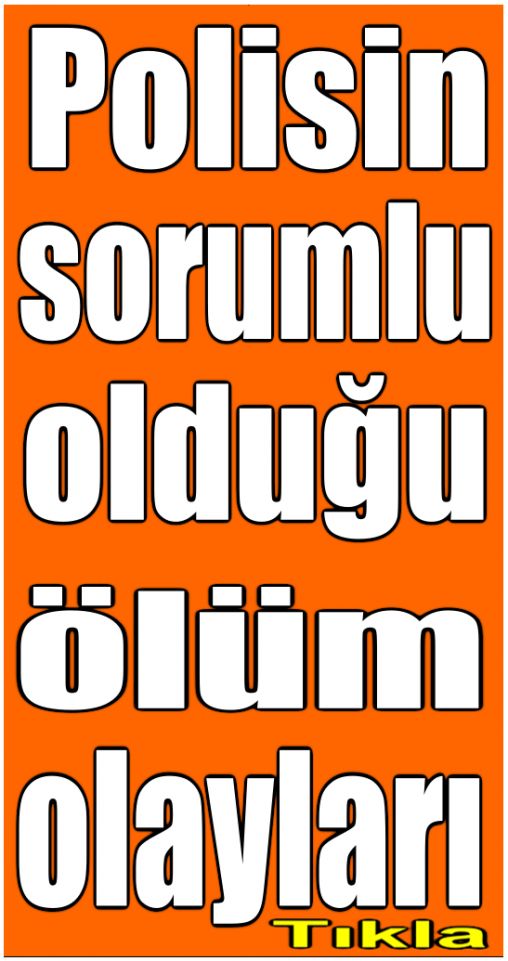
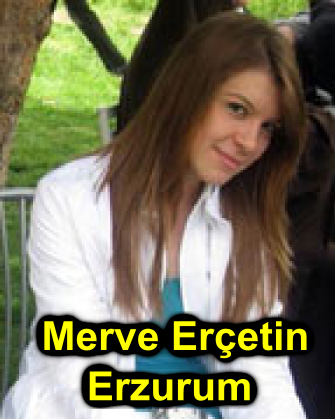


.jpg)

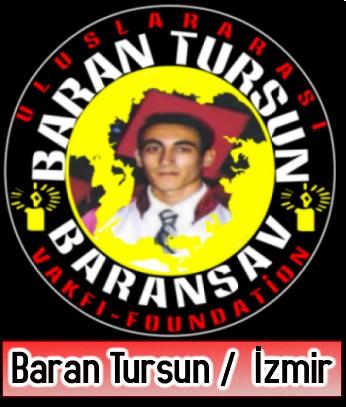
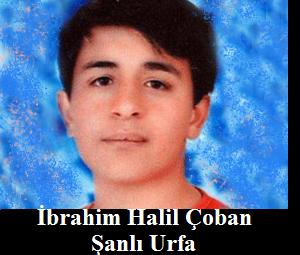

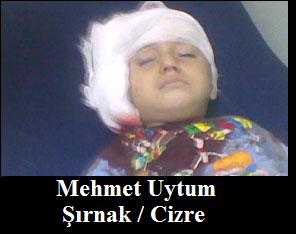
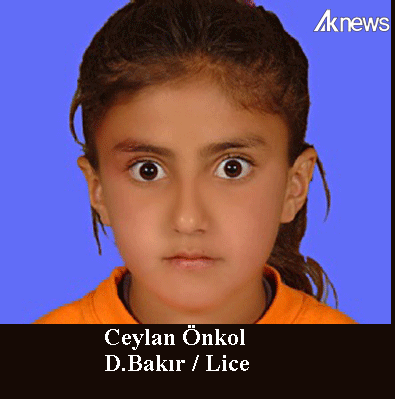


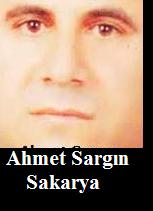

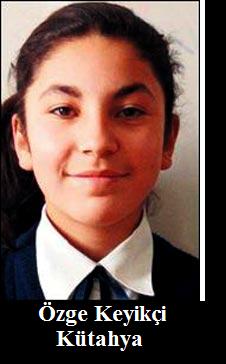
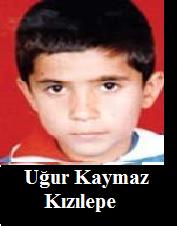

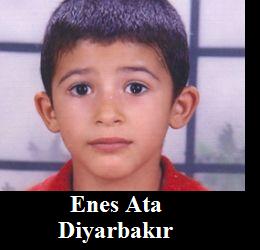
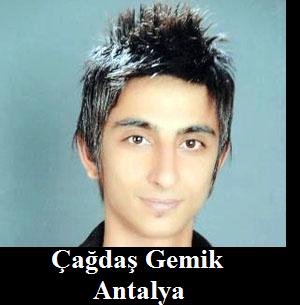

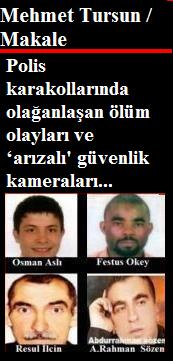

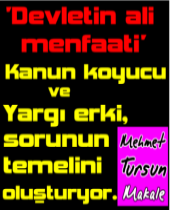


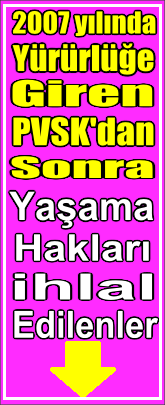
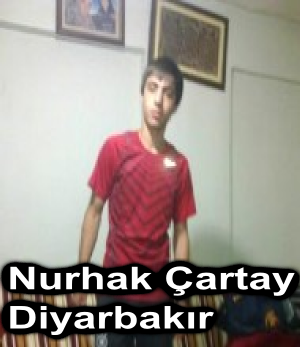



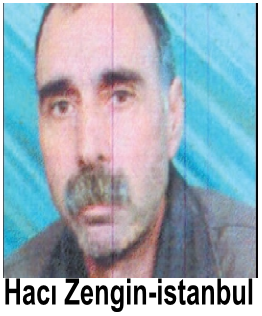
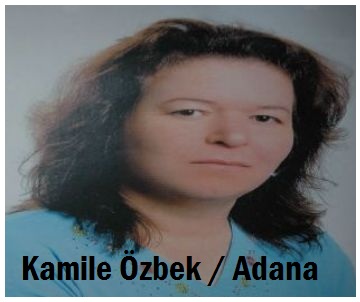
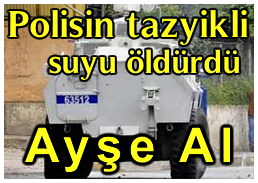
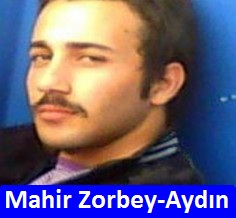
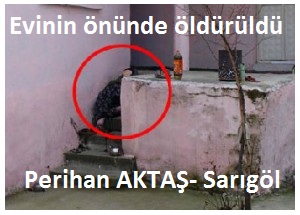




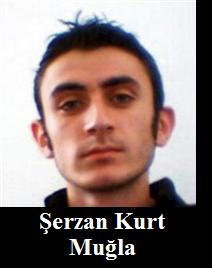



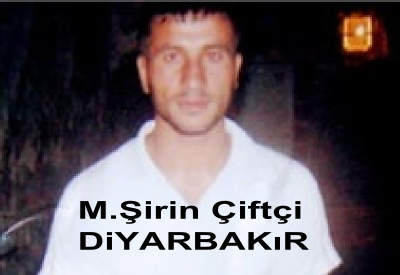
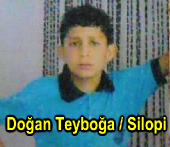
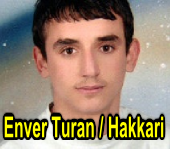
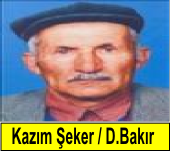
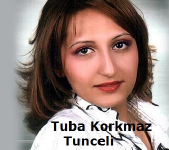
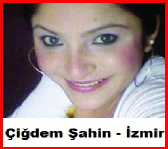
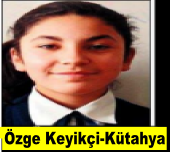
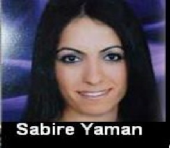
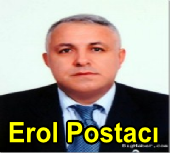
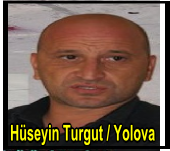
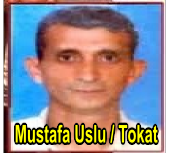
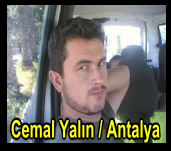
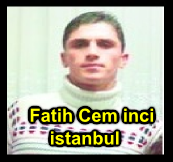

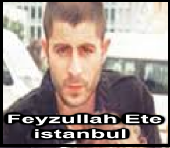


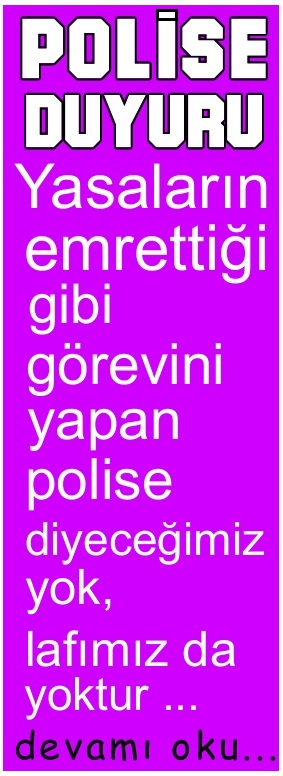
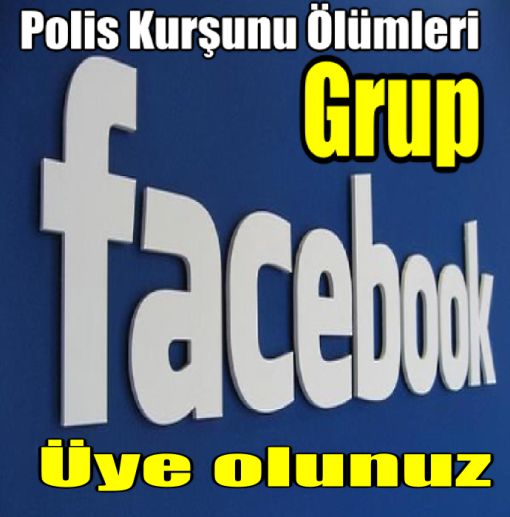

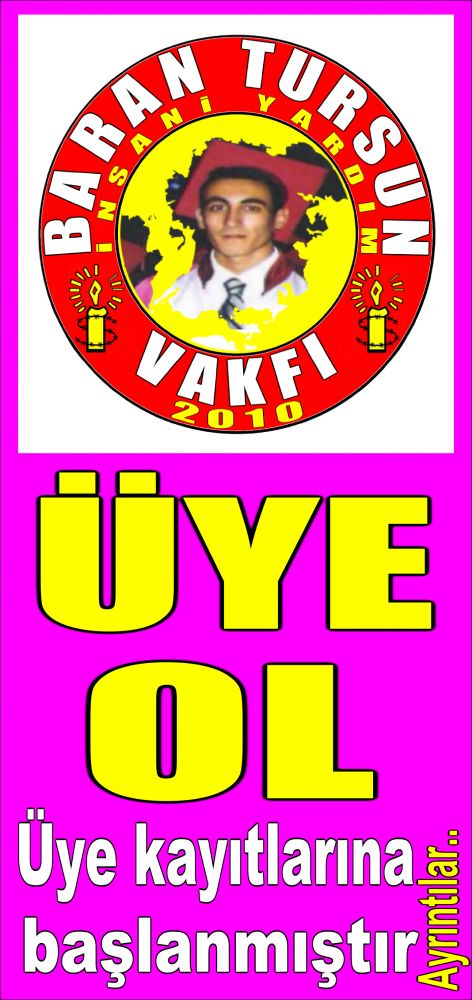
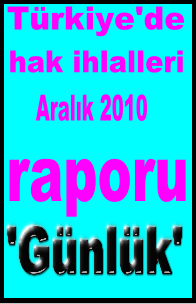



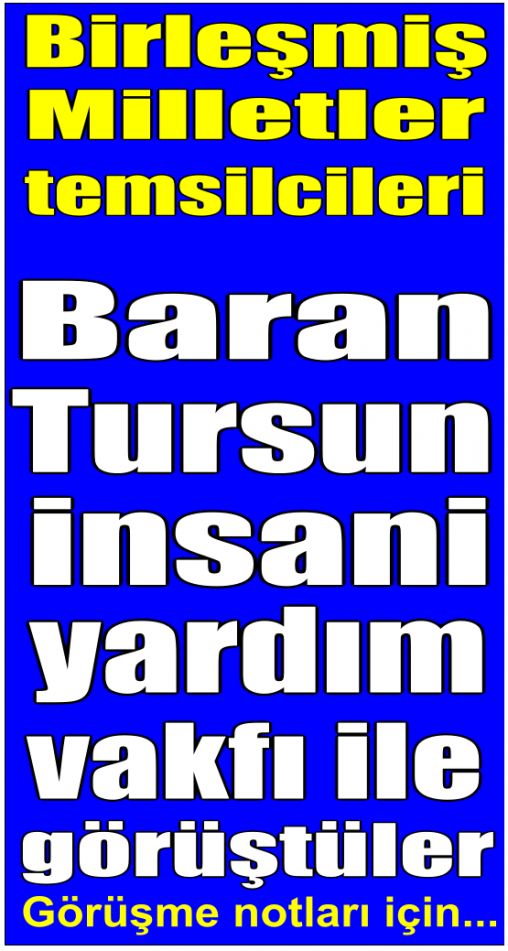
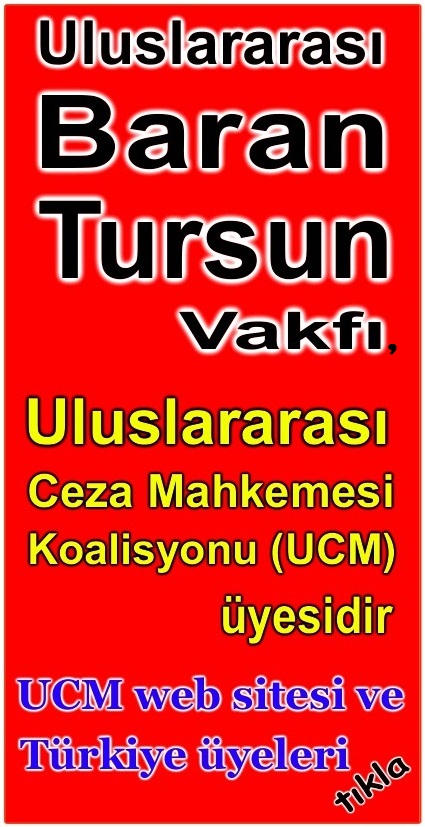
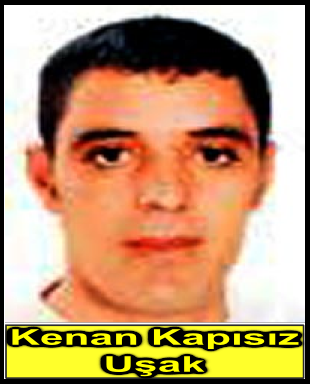 24.11.2012 günü Uşak'ta polis memurları ile vatandaşlar arasında çıkan arbedede polisin silahından çıkan kurşunla başından vurularak öldürüldü. 28 yaşındaki Kenan Kapısız 4 çocuk babasıydı.
24.11.2012 günü Uşak'ta polis memurları ile vatandaşlar arasında çıkan arbedede polisin silahından çıkan kurşunla başından vurularak öldürüldü. 28 yaşındaki Kenan Kapısız 4 çocuk babasıydı. 

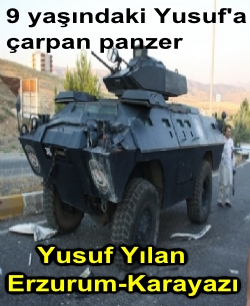

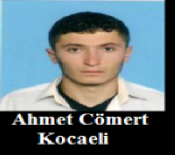

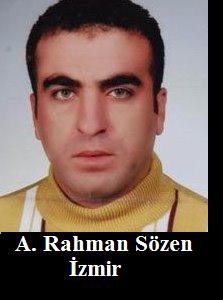
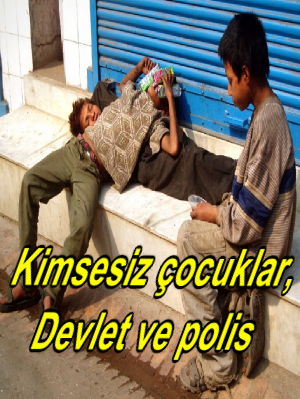
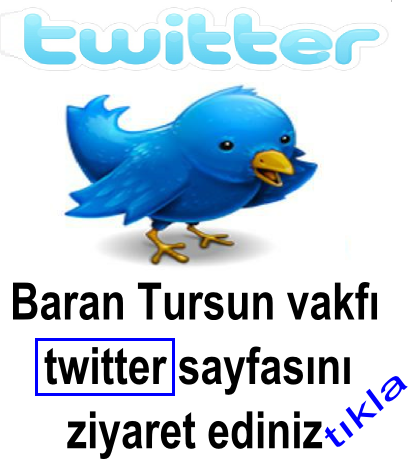
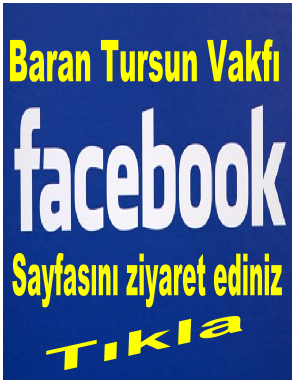
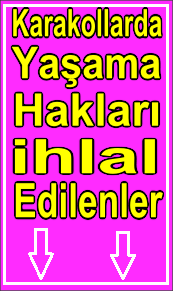
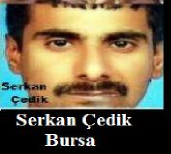
.png)

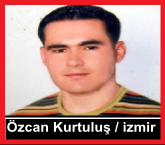
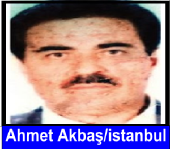
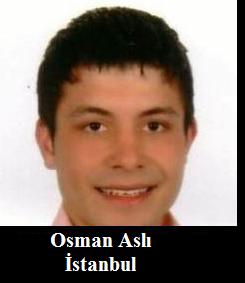
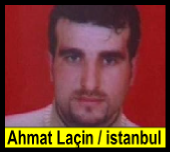
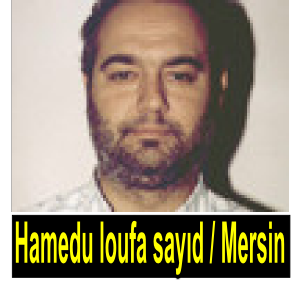
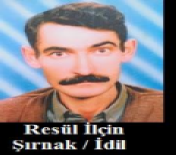
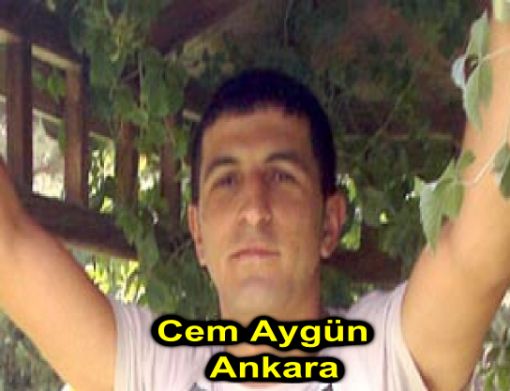 Cem Aygün-Ankara: Ankara Keçiören İncirli’de 22 yaşındaki Cem Aygün “dur” ihtarına uymadığı iddasıyla polisler tarafından öldürüldü. 1 ay önce cezaevi'nden çıkan gencin ölümüne ilişkin emniyetin aileye verdiği bilgiler ise çelişkilerle dolu. Baba Celal Aygün:"Oğlum Cem Aygün öldürüldükten 8 saat sonra bize haber verildi" dedi 30.08.2012
Cem Aygün-Ankara: Ankara Keçiören İncirli’de 22 yaşındaki Cem Aygün “dur” ihtarına uymadığı iddasıyla polisler tarafından öldürüldü. 1 ay önce cezaevi'nden çıkan gencin ölümüne ilişkin emniyetin aileye verdiği bilgiler ise çelişkilerle dolu. Baba Celal Aygün:"Oğlum Cem Aygün öldürüldükten 8 saat sonra bize haber verildi" dedi 30.08.2012